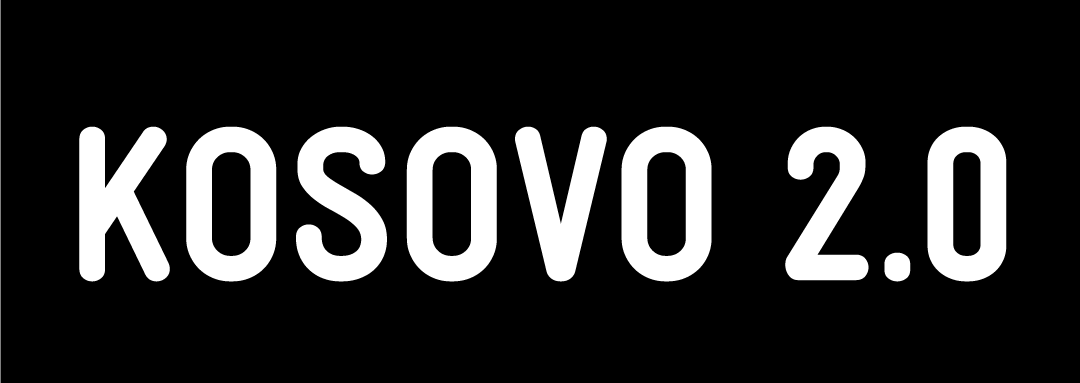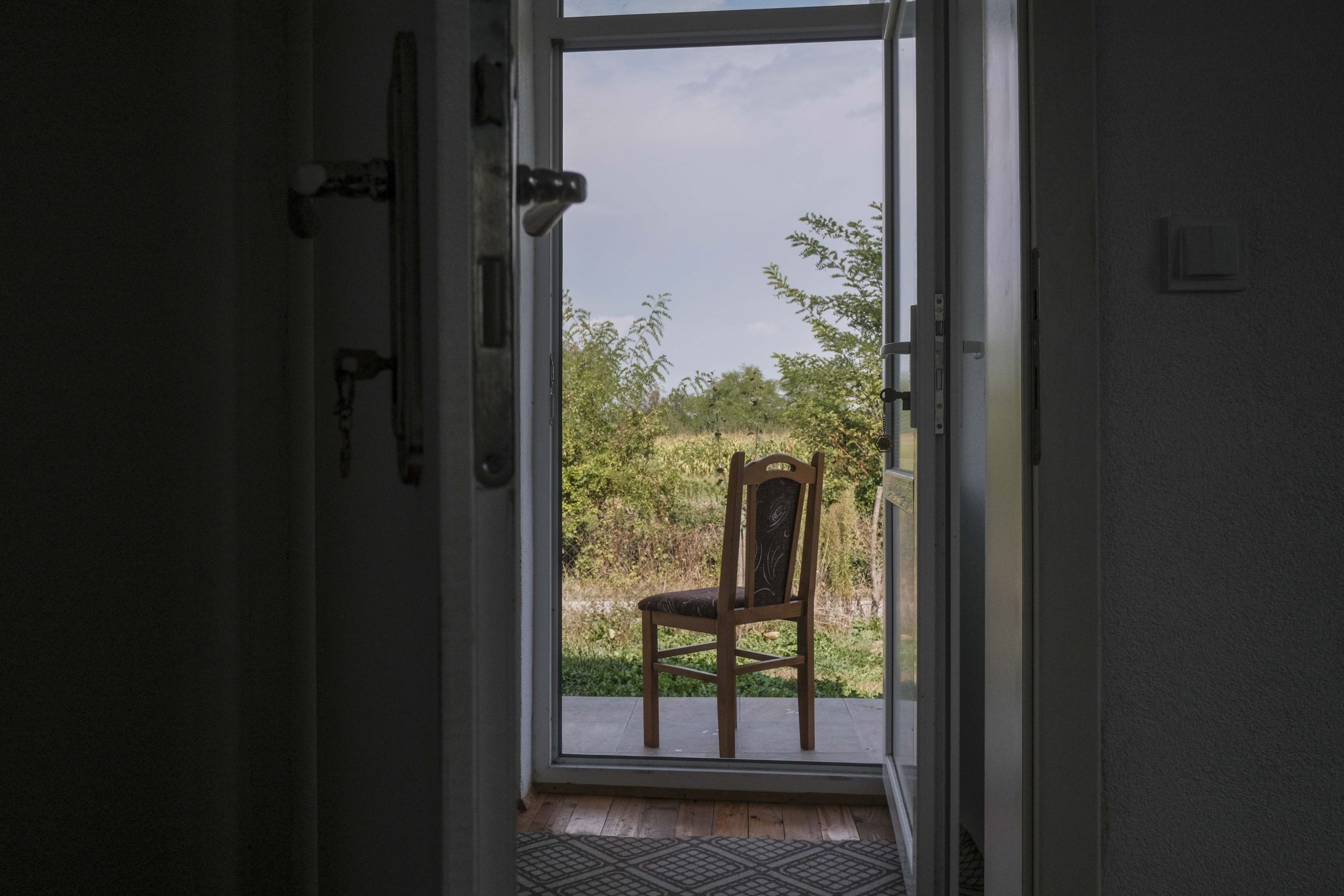
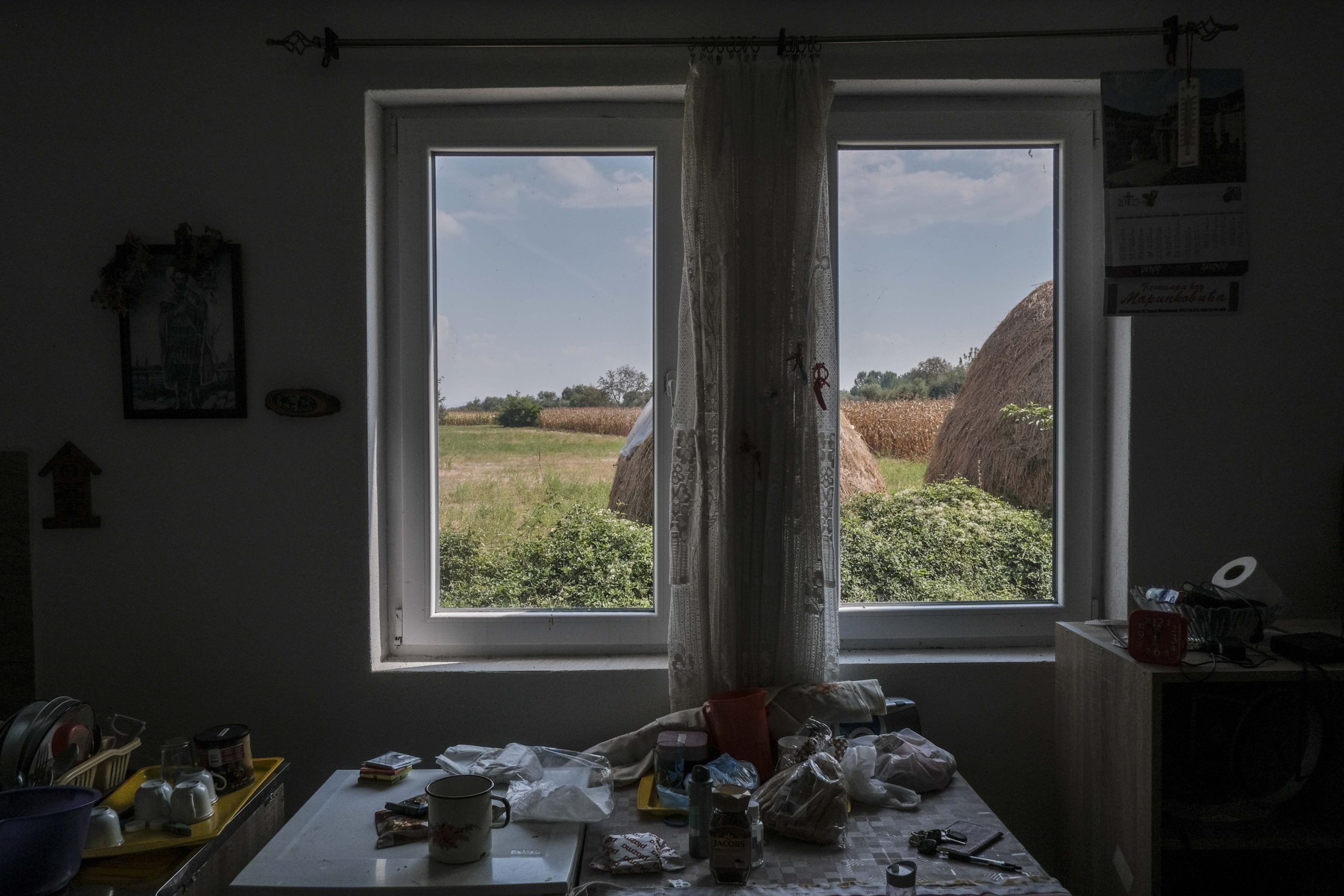
Fly on the wall. Inconspicuously perched in the background, observing and absorbing. I heard the expression right before coming to Goraždevac for a reporting assignment, and it sounded like just the right thing for me.
Admittedly, I hadn’t considered that in a tiny Serb village in western Kosovo, a two-meter-tall fly with an Albanian name and a Serbian accent straight out of Belgrade might not be all that inconspicuous.
“Who are you and what’re you doing here?”
Outside the house I had moved into a few days earlier, on the other side of a wooden fence, stood a man. It was getting dark, but the look in his eyes felt darker still.
For a second, I played out a potential answer. “Good evening! My name is Ilir. I’m an Albanian from Belgrade. Although actually I’m a little Serbian too. In fact, I’m equal parts Serbian and Albanian. I mean, it depends — the feeling is fluid in nature. I’ve come here right in the middle of the worst security crisis Kosovo has seen in years, but, I assure you, it’s just a coincidence. See, for a while now, I’ve been curious about how the Serbs actually live here.”
No one’s going to buy that. Better keep things simple.
“I’m working with Darko, from the radio…”
The man kept staring at me. I felt a lump in my throat.
“I’m staying here at Milić’s aunt’s place. Right now, she’s at her mother’s in…”
“Alright, you don’t have to explain yourself to me,” my new neighbor rumbled. “I just came around to make sure you aren’t some sort of Turk.”
The Ottoman Turks left these parts more than a century ago, but I could feel from the man’s tone that they aren’t remembered fondly.
What do I know? I guess I’m no Turk. We’ll see.
The Little House
Although most of the locals don’t know me yet, I feel like I know the place. Occasionally, I collaborate with Radio Goraždevac, the only Serbian-language media outlet in this part of Kosovo, so it’s not my first time in the village.
But this time something is different. In the north of Kosovo, where Serbs are the vast majority, the relationship between locals and the Kosovar authorities has been increasingly tense. The negotiations in Brussels between Serbian President Aleksandar Vučić and Kosovar Prime Minister Albin Kurti had once again ended in failure. The summer seemingly brought a lull, but no one knew what fall would bring.
In this isolated community in the west, you could feel the tension in almost every conversation. Like the background sound of a ceiling fan in a David Lynch scene — vague but always present, filling you with a sense of unease.
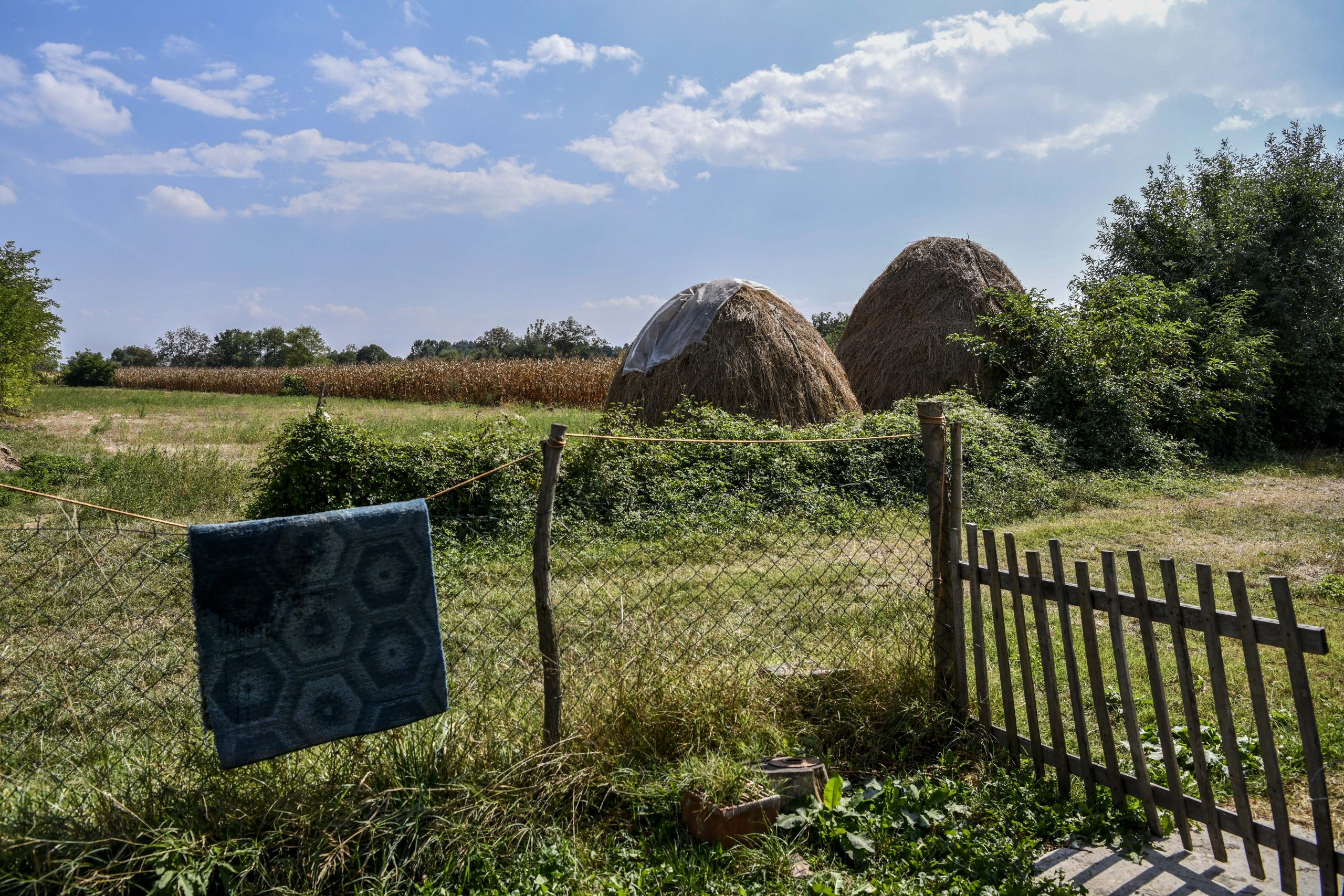
Things would seem more peaceful when I was at my little house though. Behind it stretched groves and fields of corn. Around nightfall, I would sit on the small porch with the lights off, sometimes because the electricity was out, other times because I realized it was nicer that way. The Accursed Mountains ablaze with a dusky purple, I’d watch the darkness engulf the house, listening to the crickets in the fields surrounding me.
The Center
The view from the village’s main square shows the overlapping institutional realities of Goraždevac Serbs. With just 30 meters separating them, there’s a Kosovar police station and a Serbian Provisional Administrative Office, the local branch of Serbia’s parallel institutions inside Kosovo. Hanging limply outside the buildings on this hot summer day are the two country’s respective national flags.
The square is usually empty, as people flock to the other side of the main street where most of the village’s informal institutions are located. There you will find two small village stores, one opposite the other, where locals drink their beer; a small bus stop with a wooden bench; a coffee vending machine (the only place in the village where you can have an espresso); and a small kiosk. And in this kiosk, or around it, you will find Aunt Ljilja.
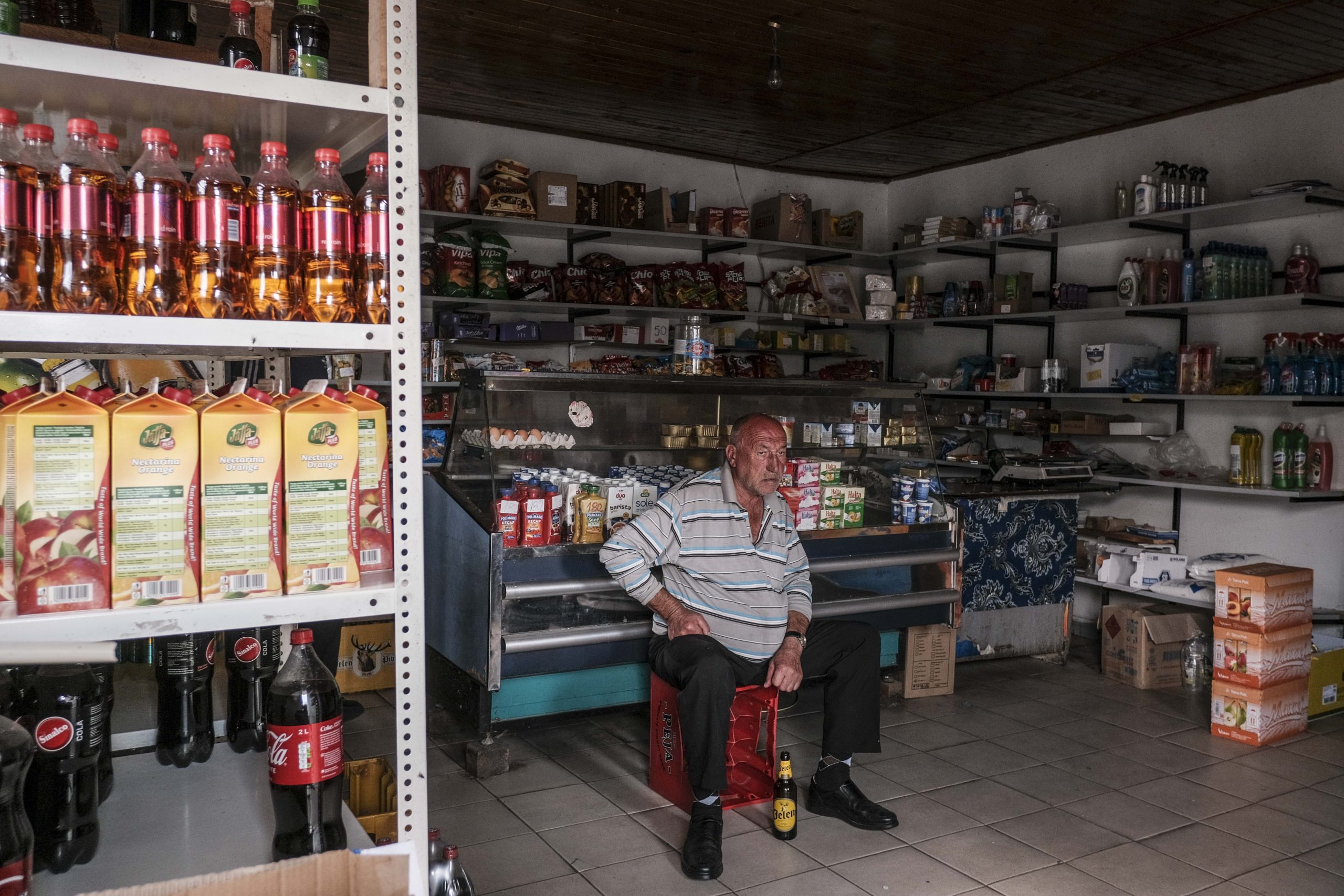
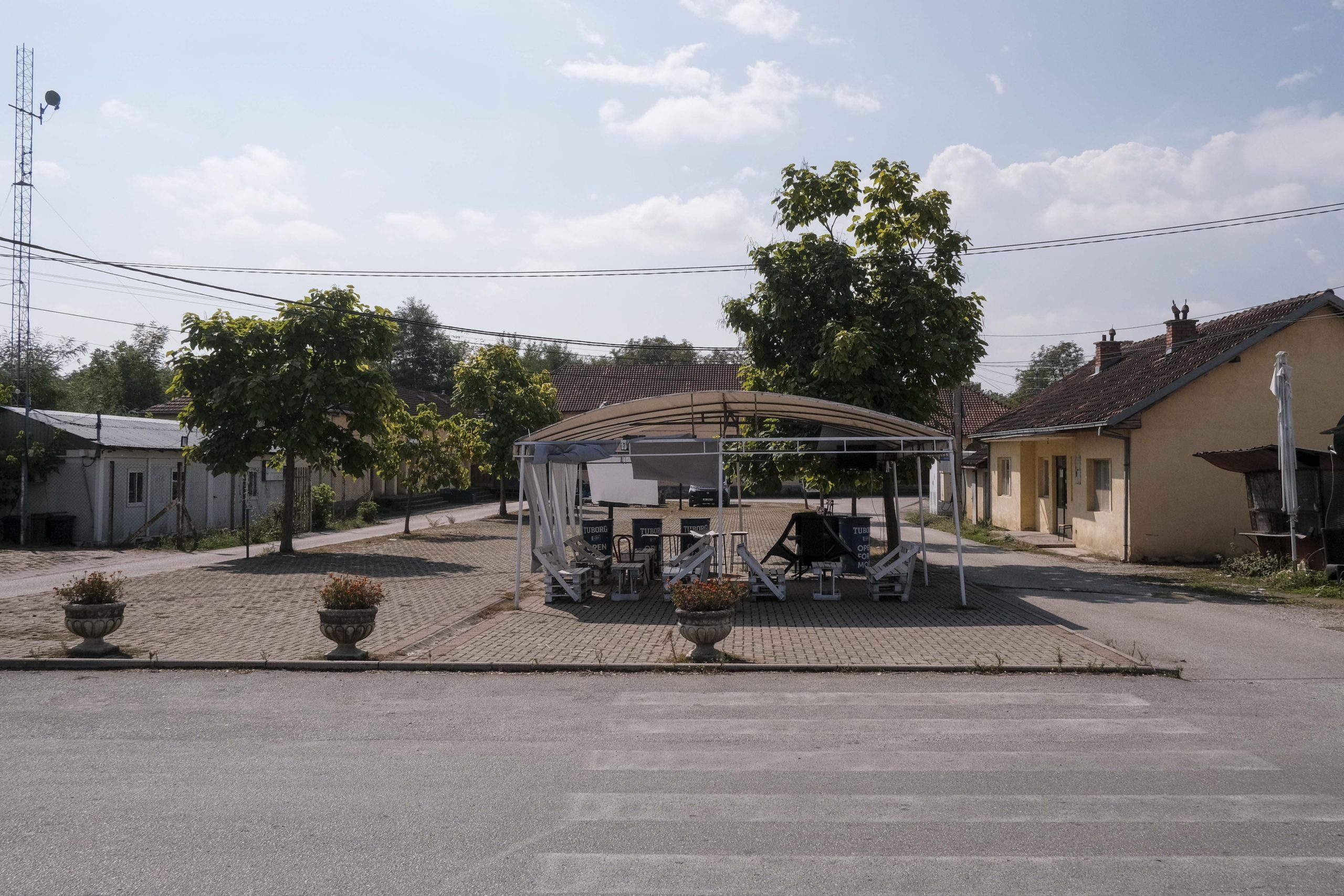
Her role in this community is simple, yet more important than any other: “Selling bread to the hungry,” she says with a smile. Every day, from seven in the morning to seven in the evening, Ljilja sells bread to the hungry, even on Sundays, because people get hungry on Sundays too. That’s how it’s been for the last 20 years.
She’s now in her mid-60s, her face wrinkled and complexion dark. You can see in her eyes that she’s been through a lot, and you can also see that she’s not a person who gives up easily. Ljilja is a pious woman. “I’ve only had Him, when everyone else abandoned me,” she told me on my first day there. At one point, 40 years ago, she ended up on the street with her six-month son — homeless and jobless, without a cent to her name.
In the morning, before it gets too hot, Aunt Ljilja sits inside the kiosk. She rigged it up with everything she might possibly need to get through a long day. “All that’s missing is a bed,” she jokes. Next to the kiosk, on the side that only gets mild morning sun, she even set up a small space to grow flowers.
Later, when the heat inside her tiny aluminum workplace becomes unbearable, Ljilja is forced to sit outside, seeking the shade on different sides of her kiosk, following the movement of the sun like a clock hand on a dial. She once showed me the gap between the vending machine and her kiosk: “There’s some light breeze here, makes it easier.”
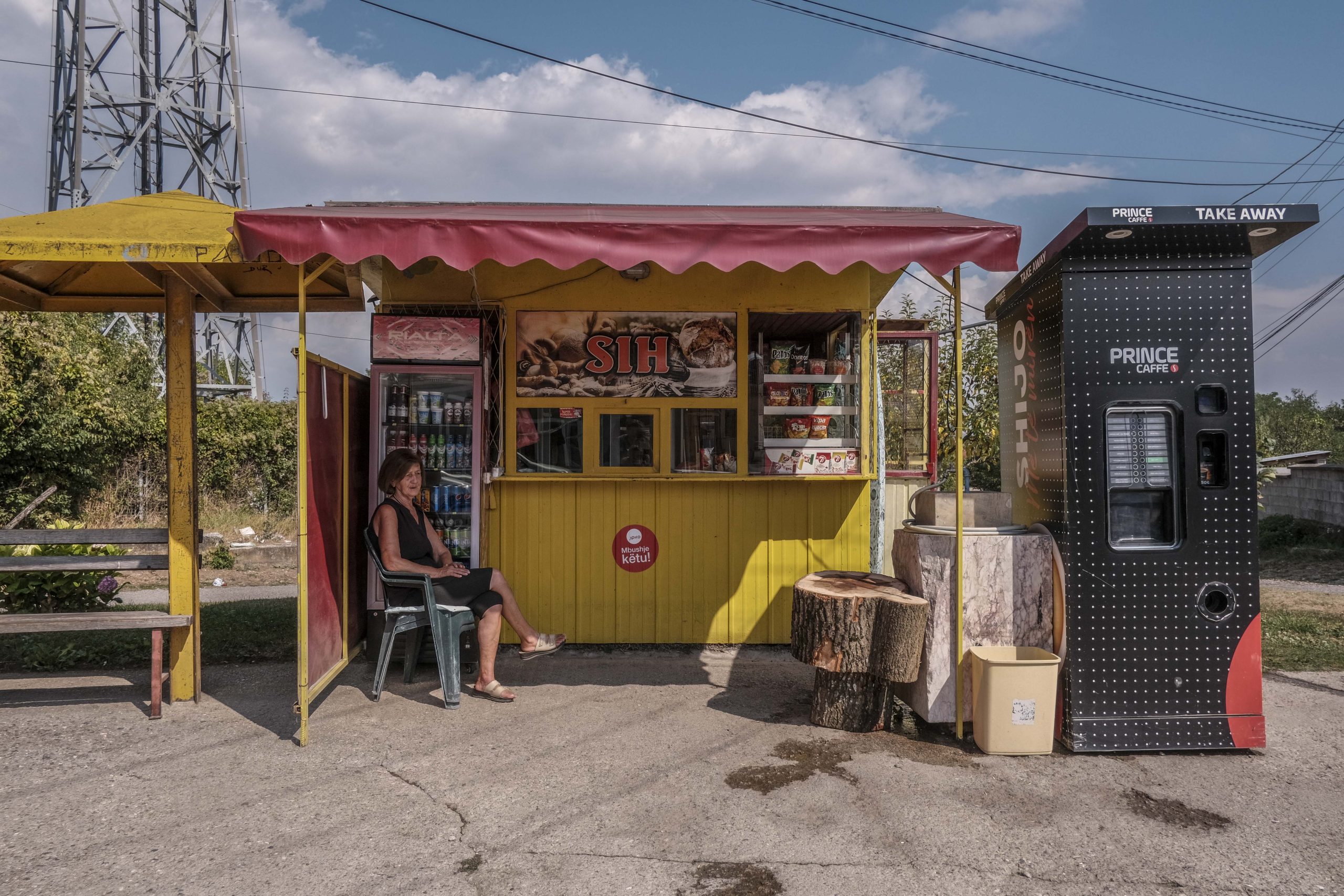
Ljilja's role in the community is simple, yet more important than any other: 'Selling bread to the hungry,' she says with a smile.
In front of her kiosk there is a small water faucet that serves a steady stream of passersby as the sun gets higher.
“We used to have a house in the mountains. It would take us six or seven hours of walking to reach it. I still remember the taste of the spring water up there,” she told me. “They burnt it down after the war.”
“Now there’s a road leading to it, so it’s really easy to get there,” she said, “but I don’t want to go. I want to keep the house in my memory as it was before. And the spring is gone too.”
The Watermill
Every day, I walk from my little house to the center through the winding streets of Donja Mahala. Many of the houses are in ruins, or little better than that. On a few, in giant letters, reads “FOR SALE.” Yet many are modern and tidy, and from the shade of deep gardens and yards, cutting through the greenery and flowers, come voices, chatter and laughter. Suddenly I hear a thunderous “Helloooo!” A small gang of children on bicycles rushes past me and towards the corn fields, exploring the edges of the known world.
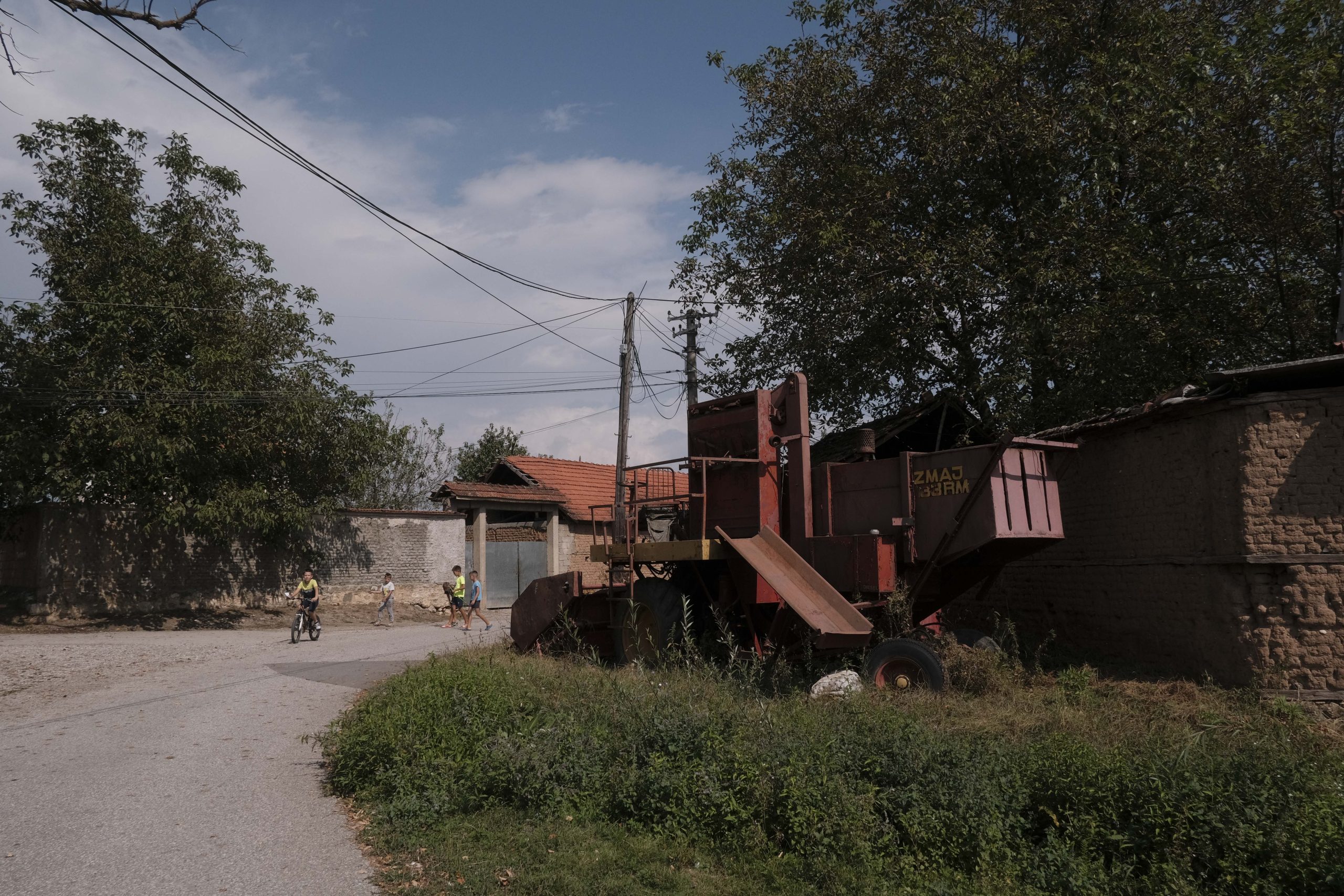
Halfway to the center I arrive at a junction where a beautiful old stone house with a watermill is located. It is where locals used to grind wheat into flour.
This is also where one of the village’s most important traditions take place every May 14: Saint Jeremiah’s Day, the saint’s feast day the village celebrates as its Slava.
In the old times, the joyous ritual of bathing in the Jaz, the creek that runs down the middle of Donja Mahala, meant life to the village. It was believed to ensure an abundant harvest in the fall. Since after the war, when people started moving to Serbia and further afield, it gained another significant function: it is the only day of the year when everyone comes back together again.
But then a few years ago, the Jaz went dry. The locals now temporarily dam the dry creek bed and fill it with water from a nearby well, but there is less water in the wells too.
“In the past, you could find water half a meter down. Now you have to dig down to four,” one local man told me.
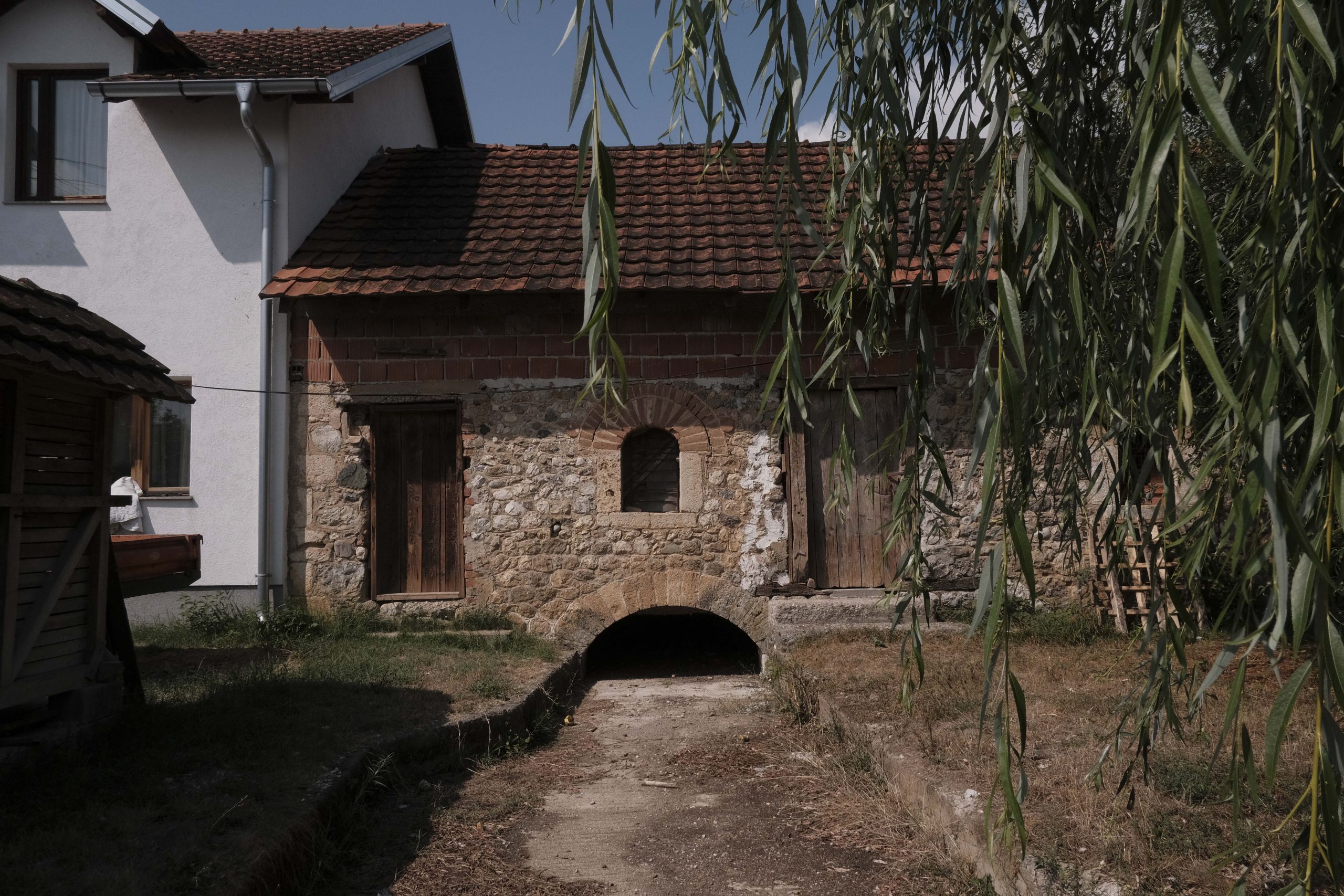

Dry springs and wells mean greater pressure on the municipal water supply. A number of farmers in the greater Peja area irrigate their farms with drinking water. Some tap into the pipes illegally. And then a drought comes, like this summer, and there is no water to drink.
The water restrictions are daily and last for 12 hours, from five in the afternoon to five in the morning. It’s not so difficult to get used to it, especially if you are living by yourself. You fill up several pots — one for cooking and drinking, one for the toilet, and one for bathing, and you are good to go.
“You’re lucky,” Darko laughed, “down in Donja Mahala, you can run your faucets an hour longer. It takes time for all the water to trickle down from the upper part of the village.”
The Basketball Court
Not too far from the village center, behind the school, I found a basketball court.
It was August and young people who had come down to visit family during a break from school or work were still around. It normally wasn’t a problem to scrape together two teams, sometimes even three.
I hadn’t played basketball in a quarter century, longer than most of my teammates had been alive. They were mostly all faster and stronger than me, but I had the height. Some were pronouncing my name with Serbian pronunciation, while others went with the Albanian. Either way, the play was tough and fair.
One day, behind the courts, I noticed a large swimming pool. It looked so alluring, set into the side of a gentle sloping hill and offering a magnificent view of the Accursed Mountains.
But it seemed strange to me that such a small village would have its own pool. I asked a teammate about it.
“People used to go swimming in the Bistrica river,” he replied. “But after the killings, no one goes there anymore.”
The game went on. With a little bit of luck, we would have enough time for one more before dark.
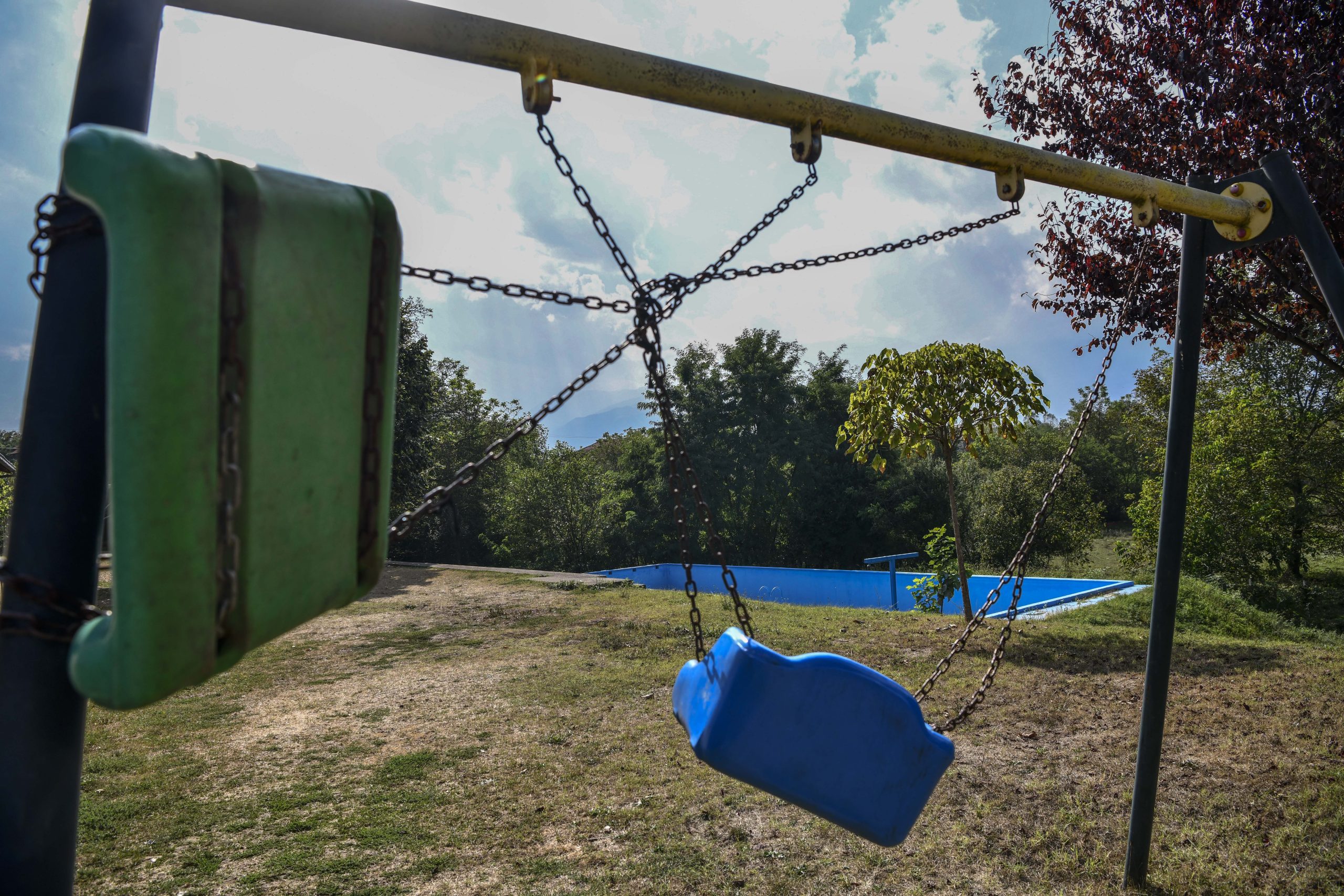
Peja
“Do you think we will have a problem if I go like this?” Rašo asked.
Everyone fell silent. Obviously, we all thought it was a problem, but no one had a solution.
We had been urgently called on to do an interview with an Albanian environmental activist in the city center they cooperate with frequently, but our cameraman happened to be wearing a T-shirt that read “Slobodno srpski.” This literally means “Freely Serbian” but kind of implies “You can speak Serbian openly.”
It was a promotional T-shirt for the “Slobodno srpski” talk show, which for more than 13 years has been produced out of Čaglavica, a Serb village just south of Prishtina. The show features Serbs and Albanians, journalists, civil society actors, politicians and others who discuss issues facing local Serbs and other minority communities in Kosovo. “Slobodno srpski” freely airs on RTK, Kosovo’s public broadcaster.
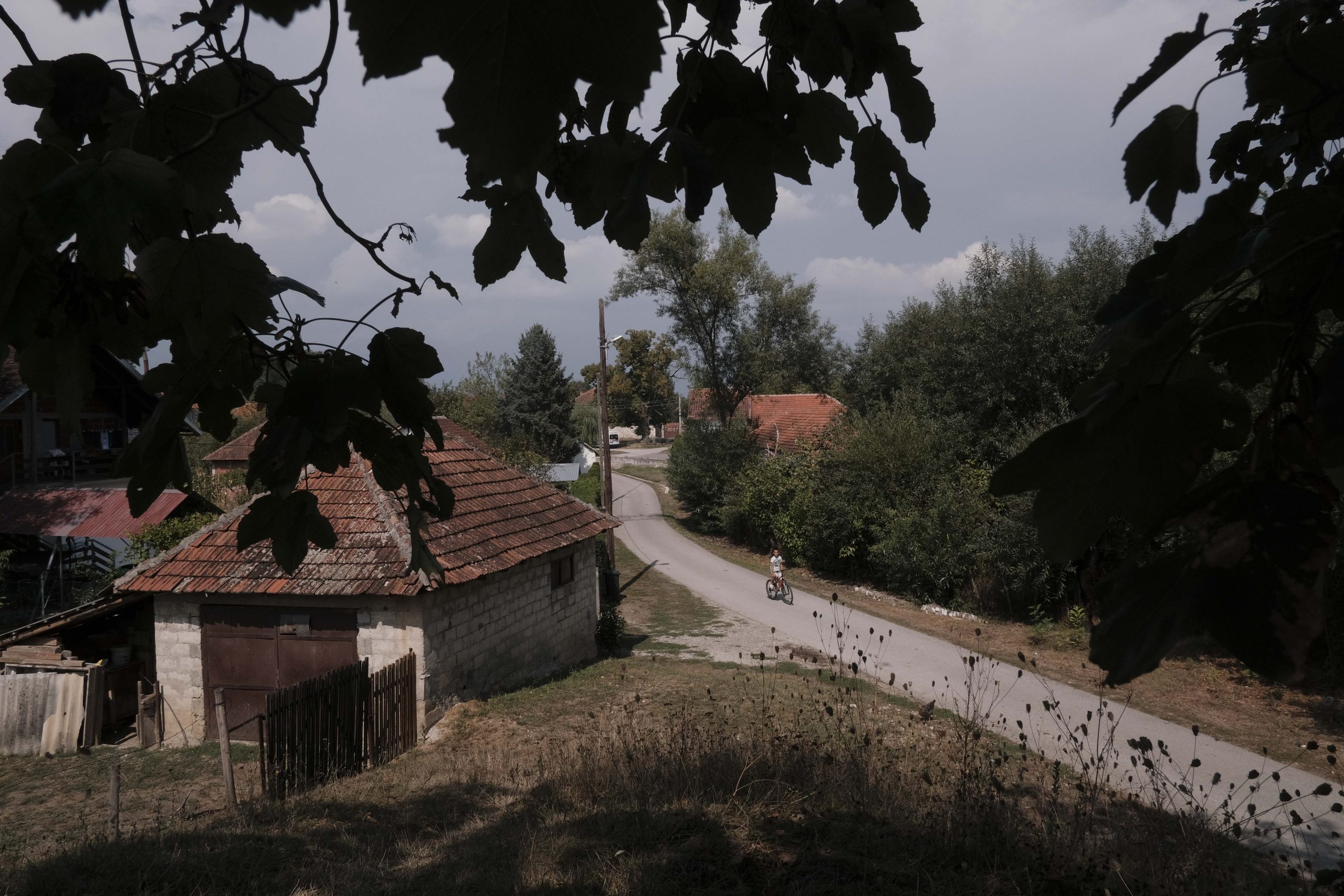
But what if we run into someone in Peja who doesn’t watch RTK? Will they see the shirt as a provocation? When the Serbian army, police and paramilitary forces pulled out of the city in June 1999 after the NATO bombing campaign, they left ashes in their wake. Albanians had been expelled, and most of their houses in the city had been burned down. In Peja and the nearby villages of Qyshk, Pavlan, Zahaq and Lubeniq, over 200 Albanian civilians were massacred.
Slobodno srpski?
One day when I was with her, Ljilja’s eyes glanced towards the empty road coming from Peja.
“You can never forget the suffering, for as long as we live. I watched them as they passed by in tractors, fleeing. I watched those children… I cried so much on that day.”
“The Albanians?” I asked her.
She nodded. “And then, later, our people fled. God save us all from war.”
Serbian is no longer spoken in the streets of Peja. Reportedly, there are fewer than 10 Serbs left in the town. There were thousands before the war. As for Albanians, it’s mostly only those older than 40 who know Serbian, the last generation it was taught to in school.
At any rate, one should be mindful even with people who can speak it, because they might not want to. You never know in what context they last heard or spoke it — and what they associate it with.
“Should I just go home and get changed?” Rašo asked.
“No time for that,” someone said. We needed to be in Peja in less than 10 minutes. And it’s at least a 15-minute drive, so we were already late.
A long time has passed since the war. Locals from Goraždevac have been going back and forth to Peja for years, most often for groceries, but also to get their hair cut, have their car fixed or for ćufte or sudžuk at a restaurant because none of that is available in the village.
Some of them can and do utter a few words in Albanian: mirëdita, faleminderit, dy birra. If it’s an older kafana owner you’re speaking to, he might serve you with the Serbian prijatno. Some of them will be happy to have a chance to speak in Serbian again. “Politics is one thing, but people are another,” you might hear. Other times it’s a bit more distant. “However many languages you speak, that’s how much you’re worth.” Most of the time you won’t have a problem. But you never know.
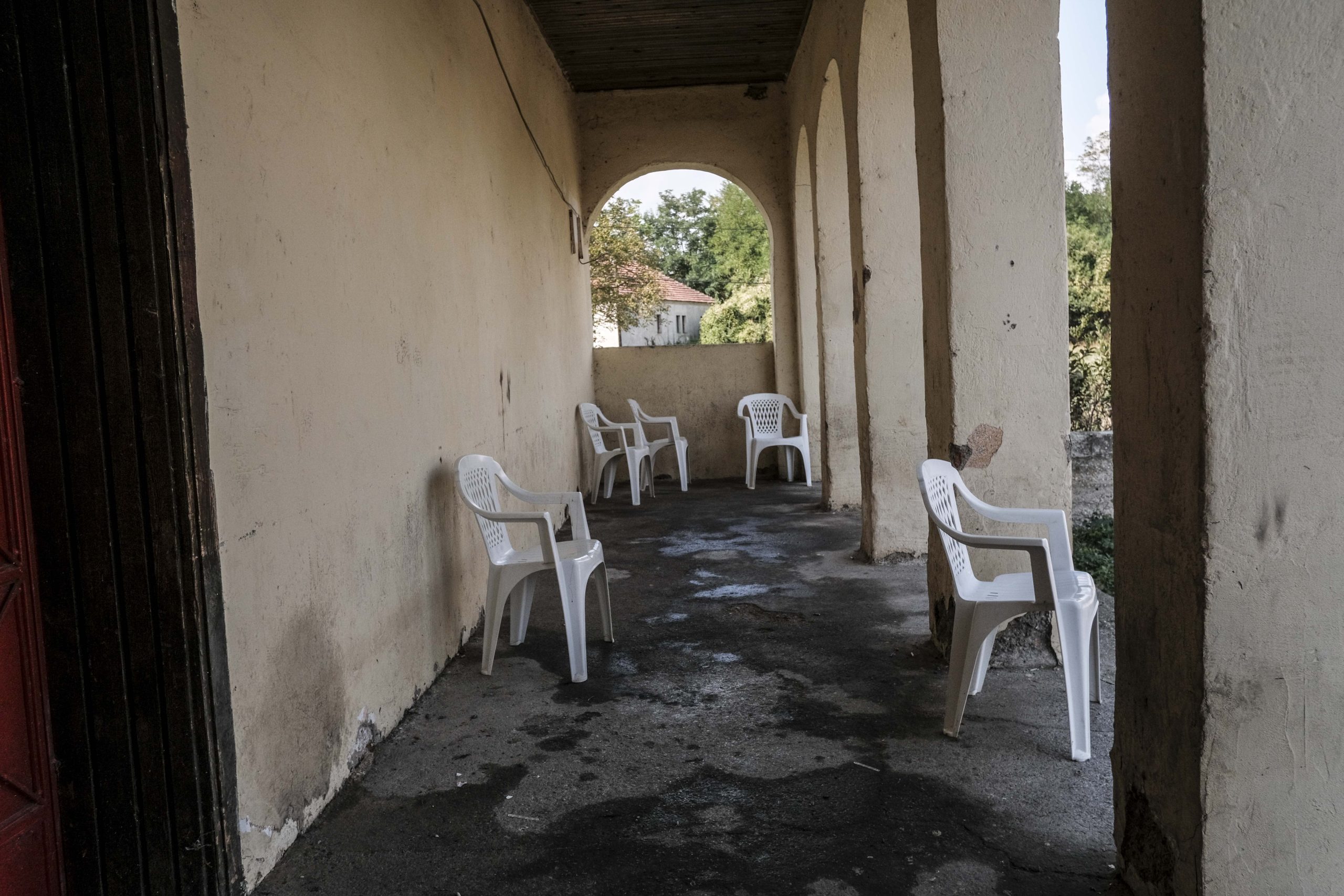
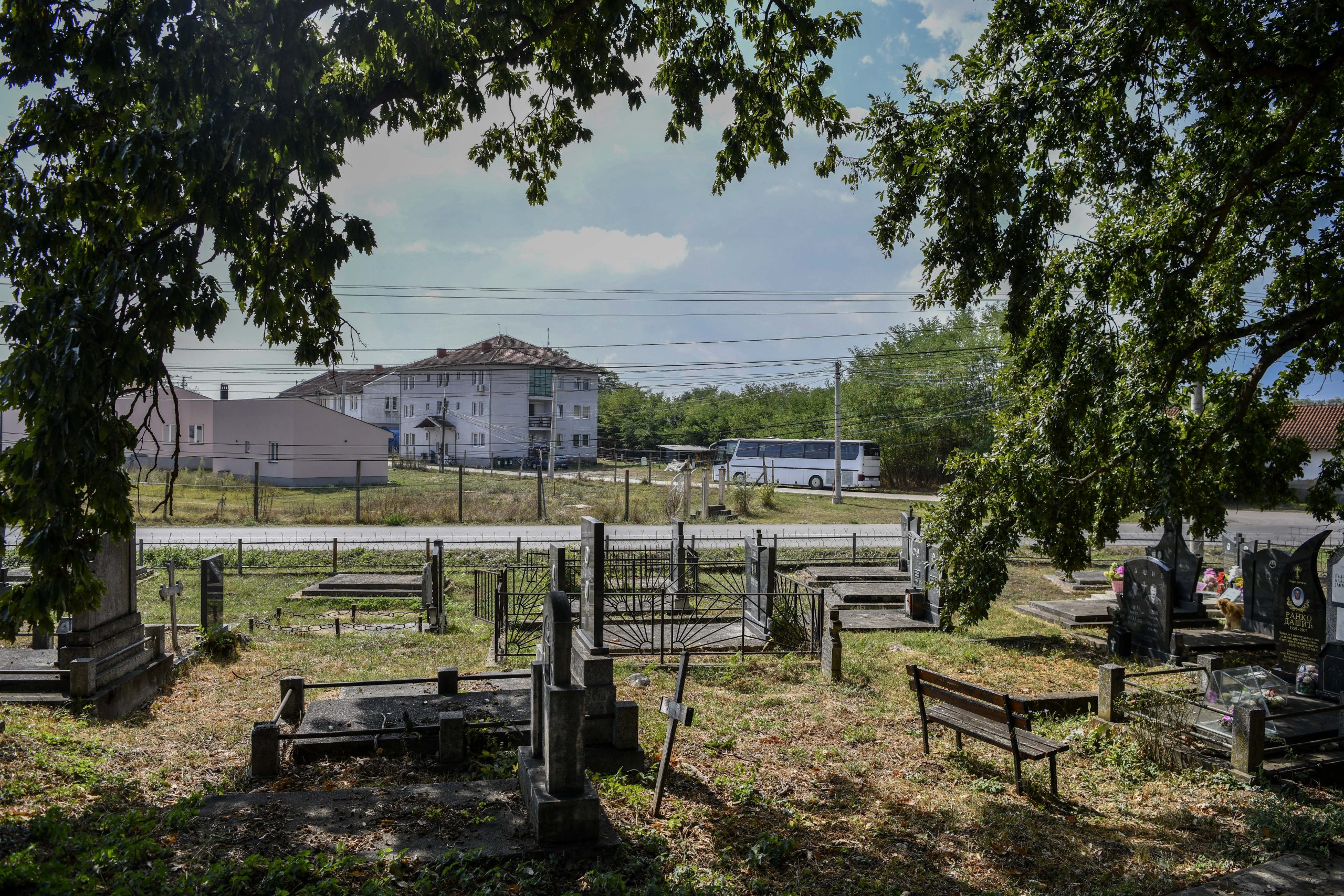
“There you go! That’ll do it,” Rašo exclaimed. It was a stroke of genius amid panic and confusion. He turned his shirt inside out, hiding the text.
We breathed a sigh of relief. Finally we could go into town.
Slobodno srpski.
The Factory
There are no factories in Goraždevac, but there is a former factory building just outside the village that’s still called Fabrika. In 2019, the owner was reportedly using the space to store dangerous chemicals, which, in a rare case of inter-ethnic solidarity, brought together hundreds of Albanians from nearby villages and Goraždevac Serbs for protests against pollution.
Before the war, the building belonged to a state-owned leather and shoe company that provided jobs to hundreds of Goraždevac locals and thousands in the wider Peja area.
After the war, with privatization, the factory ceased to exist, along with all the jobs.
Nowadays, the only remaining “factory” in the village is the Republic of Serbia, which runs parallel state institutions inside Kosovo like schools, health centers and municipal services in Serb-majority areas. The presence of these parallel institutions provide many locals with steady, if often modest, paychecks. The jobs come with heavier or lighter workloads, and some come with no workload at all.
People in Goraždevac told me that public sector jobs in the parallel system are often handed out based on party connections and “proper conduct.”
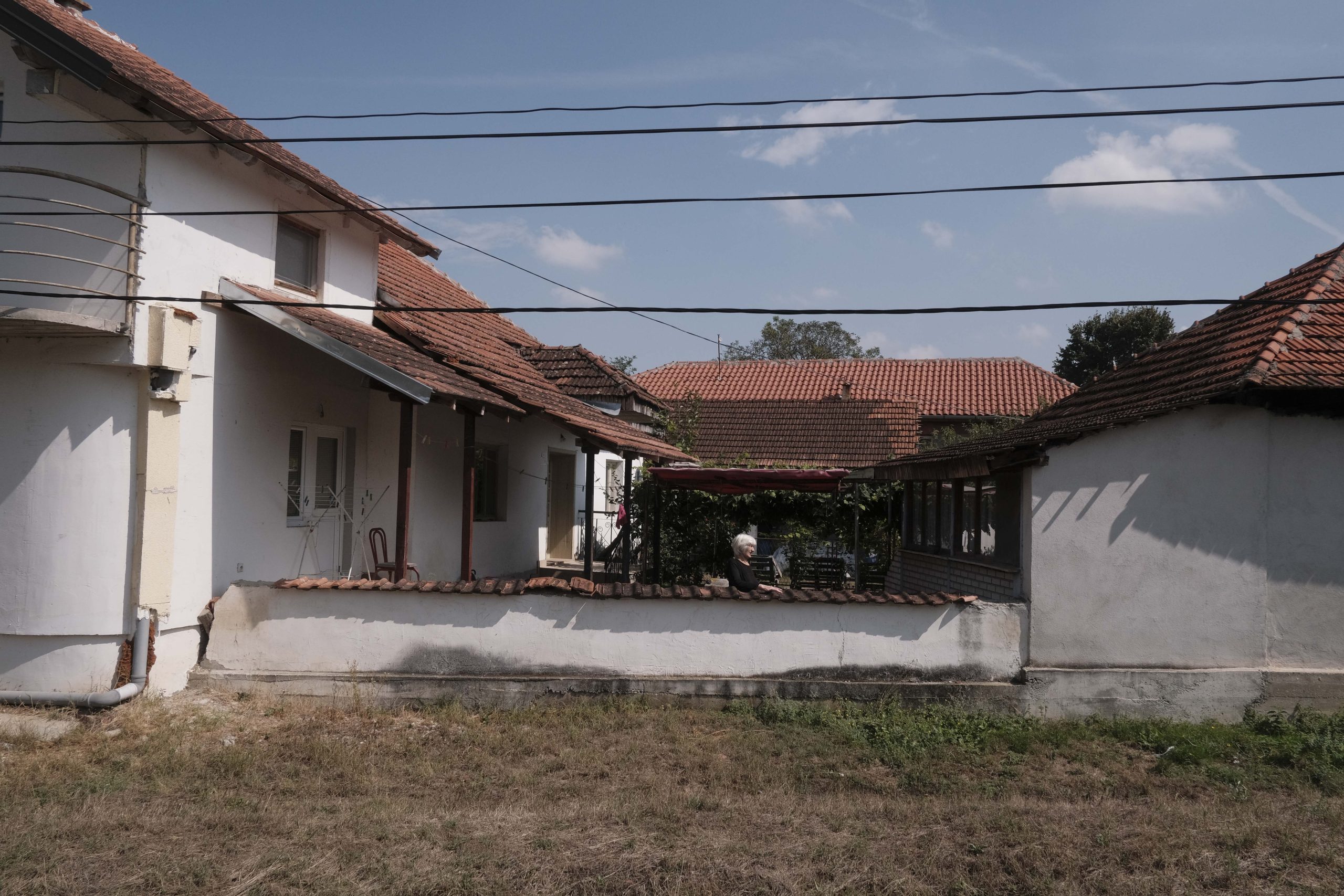
This is how the regime in Belgrade — through the Srpska Lista political party, its proxy in Kosovo — secures their network of clientelistic support, which functions in Serbia as well.
Without these outside funds, this already impoverished community would likely struggle.
And yet, the criteria for employment lowers the quality of services on offer. “I got a minor cut — nothing out of the ordinary — so I needed someone to stitch me up,” a local told me. Yet when they went to Goraždevac’s clinic, “I was told no one could do it, so they sent me to Peja,” they said.
I happened to visit the village the day before Vučić’s late May rally in Belgrade. It was organized solely to show that the ruling Serbian Progressive Party was able to gather more people than the opposition, which had just started to organize large protests across Serbia. The “progressives” created quotas to be filled by every town and city and the hunt for people began. I was told that Goraždevac, a village of roughly 700 residents, was expected to provide around 70 people.
Even those who didn’t want to go felt compelled. Those who refused could risk losing their jobs or being ostracized.
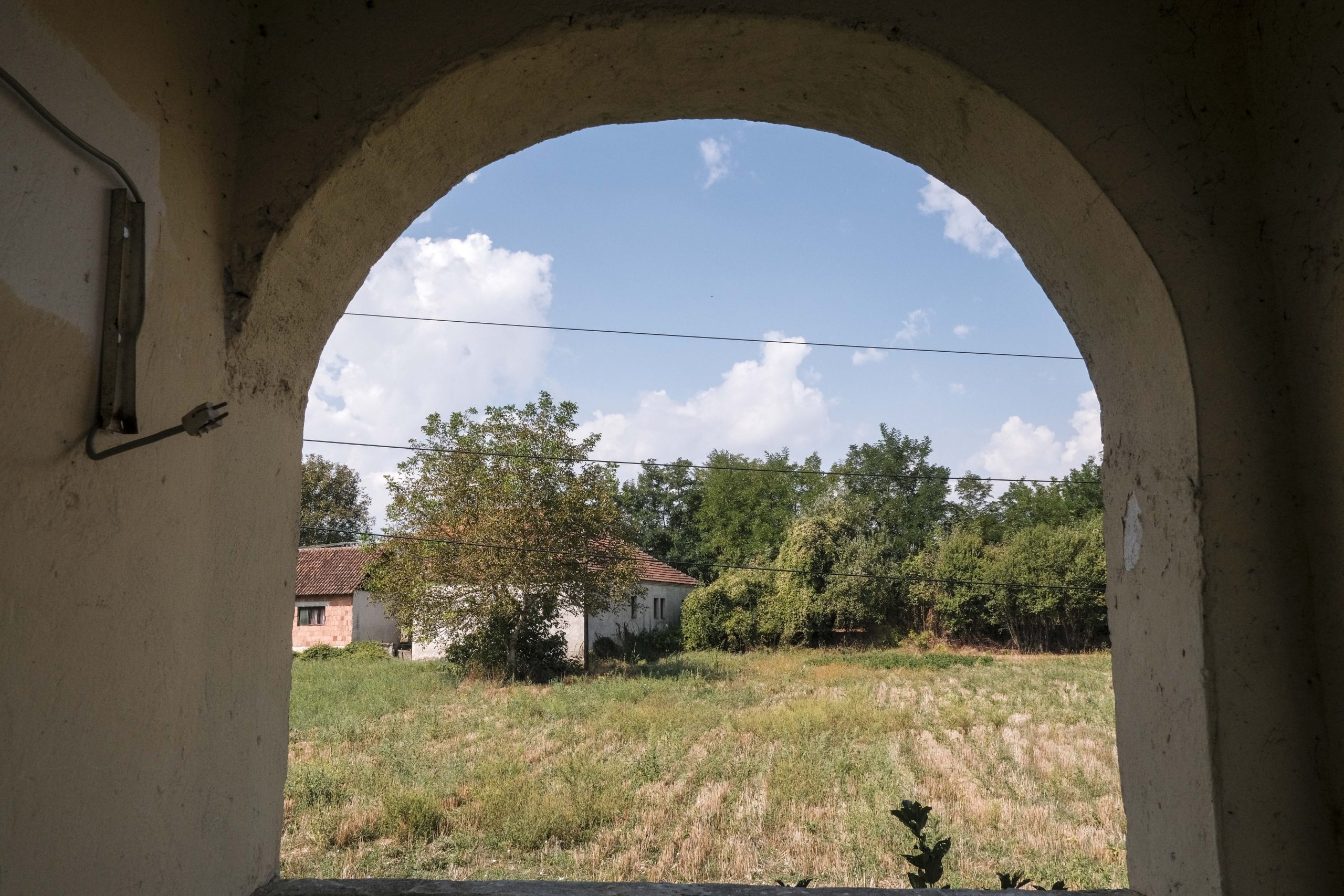
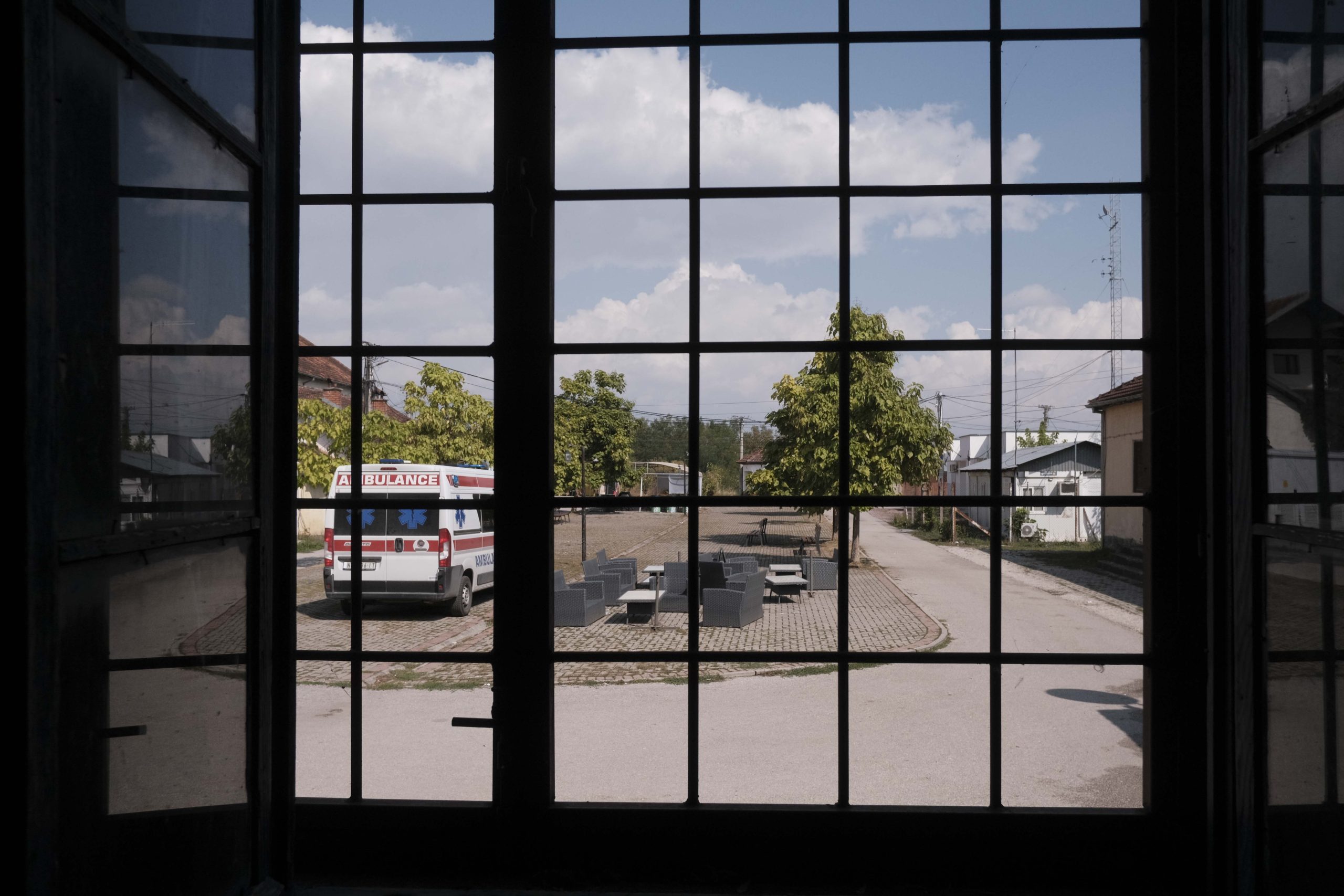
The Square
In the dead of the summer afternoon the air stood still. Damjan and I sat in the shade, leaning back in white plastic chairs, gazing at the square before us. The wide concrete space was almost melting in the sun. Paja’s kafana was empty and both stores were closed on an afternoon siesta. Even Ljilja had gone for a break. We were sipping vending machine coffee and smoking.
Using a pack of Red Luckies and a lighter, Damjan explained the issue of driving a tractor in reverse when it has a trailer attached. If you turn left, the tractor goes right, but the trailer goes left. Not easy. He’s one of the few in the village who can do it right. No wonder, he’s driven tractors since he was a kid. “I was so tiny that no one could see me behind the steering wheel,” he told me. “It looked as if the tractor was empty.”
He lost his father early and has had to take care of his family ever since. They own around half a hectare of land, and lease another five. Clover baling was well underway; he sold his in bulk at two euros per bale, or less, depending on the year.
He can’t survive off agriculture though so he had to find a second job (as a journalist at Radio Goraždevac) and then a third. Wednesdays, Thursdays and Fridays he teaches Chemistry at the high school.
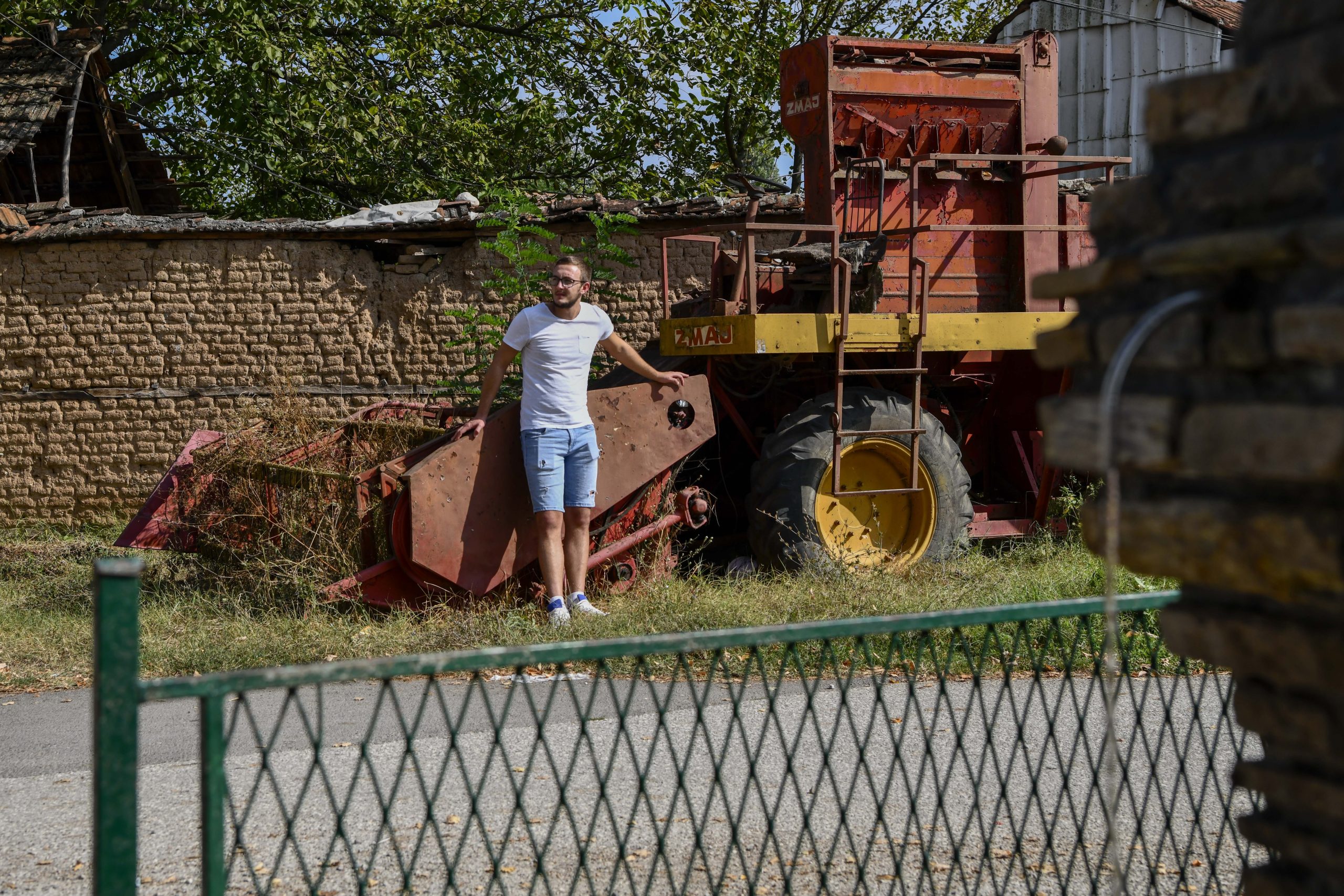
'I was so tiny that no one could see me behind the steering wheel,' Damjan said. 'It looked as if the tractor was empty.'
“You actually learn things in his classes. He really tries to break it all down to you in simple terms so it’s easier for you to remember,” Miljana and Ivona, two of his students, told me in chorus.
“They were a disaster. Out of 15 questions on the test, they got only eight right,” Damjan told me later, with a teacher’s tender concern I did not expect to find in a 23-year old.
In between classes, Damjan runs off to the radio to write news pieces for their website. In between news pieces, he plays games on his phone or watches basketball games played by Partizan Belgrade.
The House of Culture
At the bottom of the square, you will see an old building with a column of elegant yellow arches stretching alongside its right wing. It’s the former House of Culture. Inside is a large hall with a stage and antique wooden light fixtures.
“There used to be dances there, live music, crowds of people,” Ljilja said.
“It’d all be full.” She sweeps her arm towards the square, her eyes sparkling with a vivid memory. “This was where we’d get to know everyone. They’d come from all the villages, even from Prishtina and Prizren!”
But then came the rough times, and the people of Goraždevac were left alone, and the hall was left empty.
Except for that particular day.
White plastic chairs were meticulously laid out in orderly lines — there was going to be a community meeting to discuss how to spend the village’s share of the municipal budget.
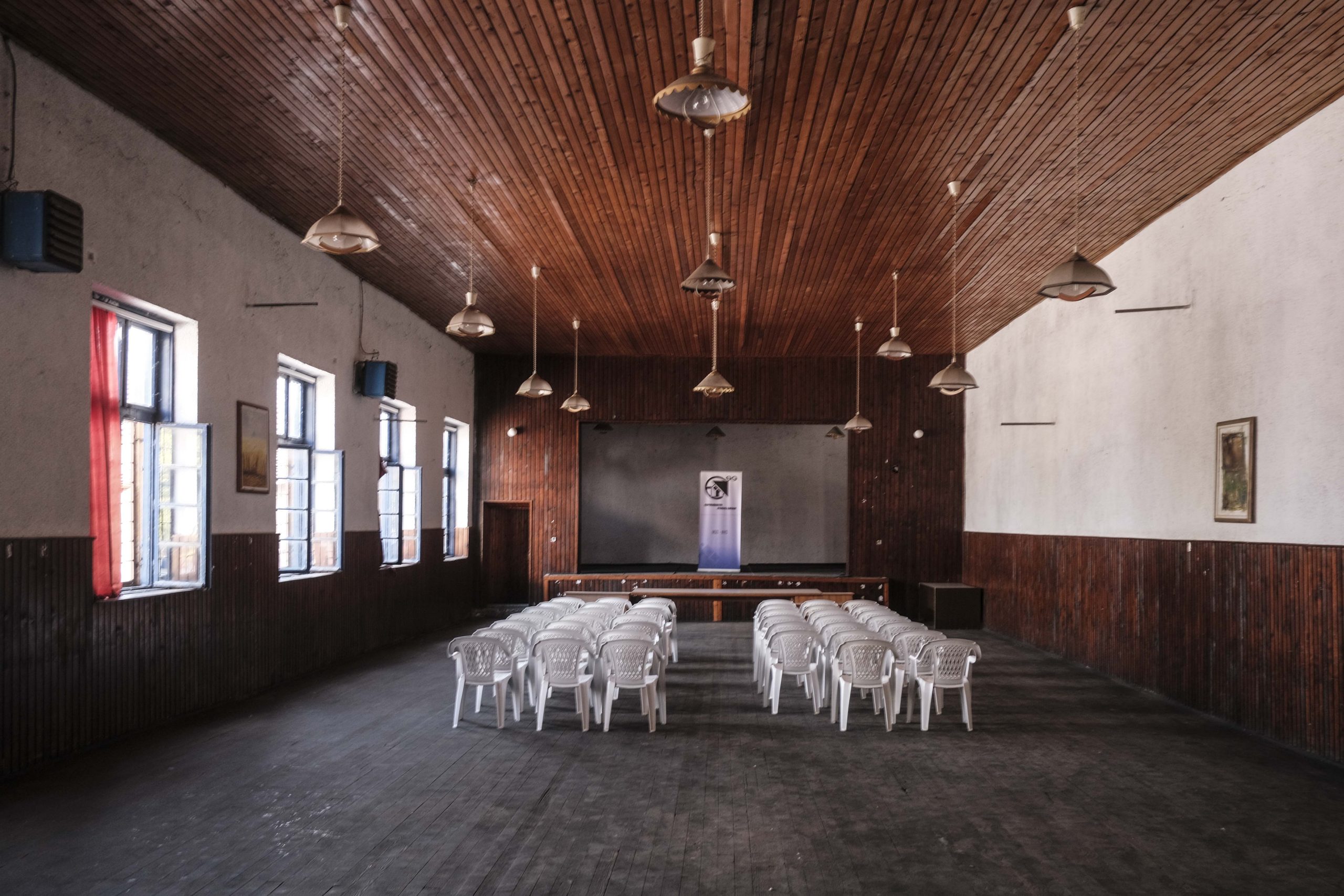
Rumor had it that the mayor of Peja himself, Gazmend Muhaxheri, would be there, an uncommon act for an Albanian politician. There’s much praise for Muhaxheri in Goraždevac. “None of the previous ones even knew where we were, but Muhaxheri pays us visits and asks us what we need,” one local said, “Last year, he even attended the patriarch’s enthronement in the Patriarchal Monastery of Peć,” said another.
It turned out the mayor was busy this time, so the municipal finance director came instead. In front of around 30 villagers, the municipal representative laid out plans for next year. Then the locals took the floor. They spoke with respect, but in a direct, often sharp manner, pointing out unfulfilled promises and things that troubled them — the lack of sewers, electricity and irrigation problems, the need for speed bumps near the school to slow drivers down.
Suddenly, music started blaring from outside, destroying the solemn atmosphere. Initially everyone tried to act as if nothing was happening, but that couldn’t last.
Enraged, one guy stood up and slammed the old wooden windows shut one by one, cursing today’s youth. The music was only a little quieter, but enough so that the meeting could be brought to an end. The municipal representatives made some promises, gave some deadlines, and everyone left.
Outside, a party was warming up. It was a celebration following the annual football tournament. I have never seen so many young people in Goraždevac. I thought that at least for the night, the square in front of the House of Culture might have looked like the one sparkling in Ljilja’s memory.
The School
Some 100 meters from the center, along the main road towards Peja, you’ll find the village school. Or schools, rather. There’s an elementary school and two high schools: a gymnasium and an economics school. Both high schools were once located in Peja, but after the war they were “moved” to Goraždevac (along with the municipal seat) in order to remain under Serbian administration.
Of course, the high school buildings in Peja didn’t go anywhere, they just function as part of the Kosovar system now.
Teachers and school staff in Goraždevac receive their salaries from the Republic of Serbia, and some of them, it’s reported, from the Republic of Kosovo as well. The schools function on the Serbian curriculum, something of great importance to the locals, who want to cultivate their national sentiment, traditions and religion. This, however, creates some impracticalities. For example, despite being a village surrounded by an Albanian populace, in Goraždevac’s schools no one learns Albanian.
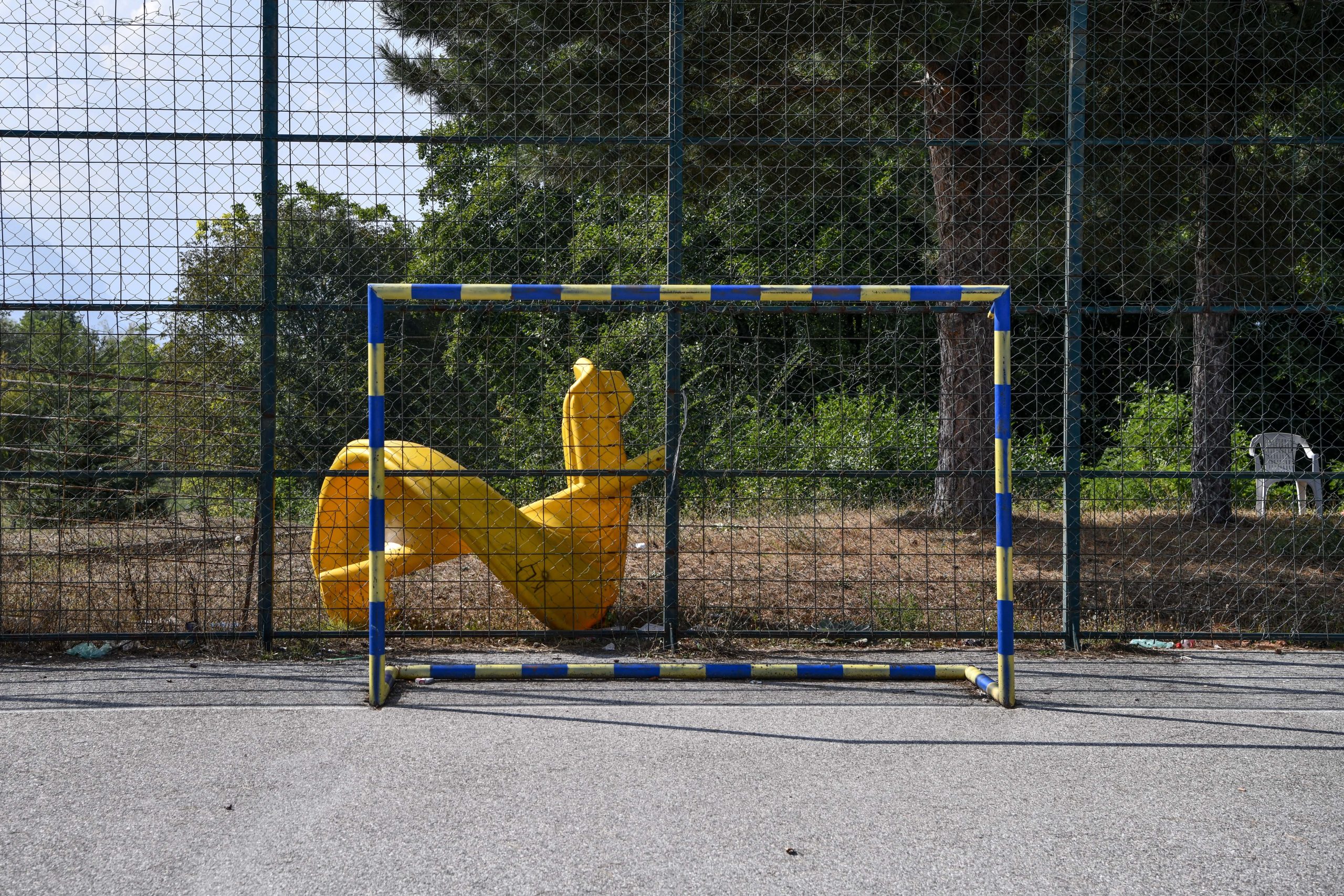
Miljana and Ivona are best friends and they’re always together. You could say they became close sitting at the same desk in school, but in reality, in their class, and even in the rest of the fourth grade of the high school for that matter, there’s no one else, so it wouldn’t really make sense to sit apart.
After two mass shootings in Serbia in May, one of which was inside a primary school, the Serbian education ministry decided to start this school year by having teachers spend an entire week discussing empathy, diversity and related topics. No one seemed to have thought about how this idea should be implemented in a two-student classroom.
“Ivona and I are discussing empathy six classes a day, with six different teachers, five days in a week,” Miljana told me. “I think my empathy is fading.”
The following week, in a rather unempathetic manner, they were given ten tests to tackle — six of them on the same day. “They wanted to check if we had studied over the summer break,” Ivona said. “Who does that?”
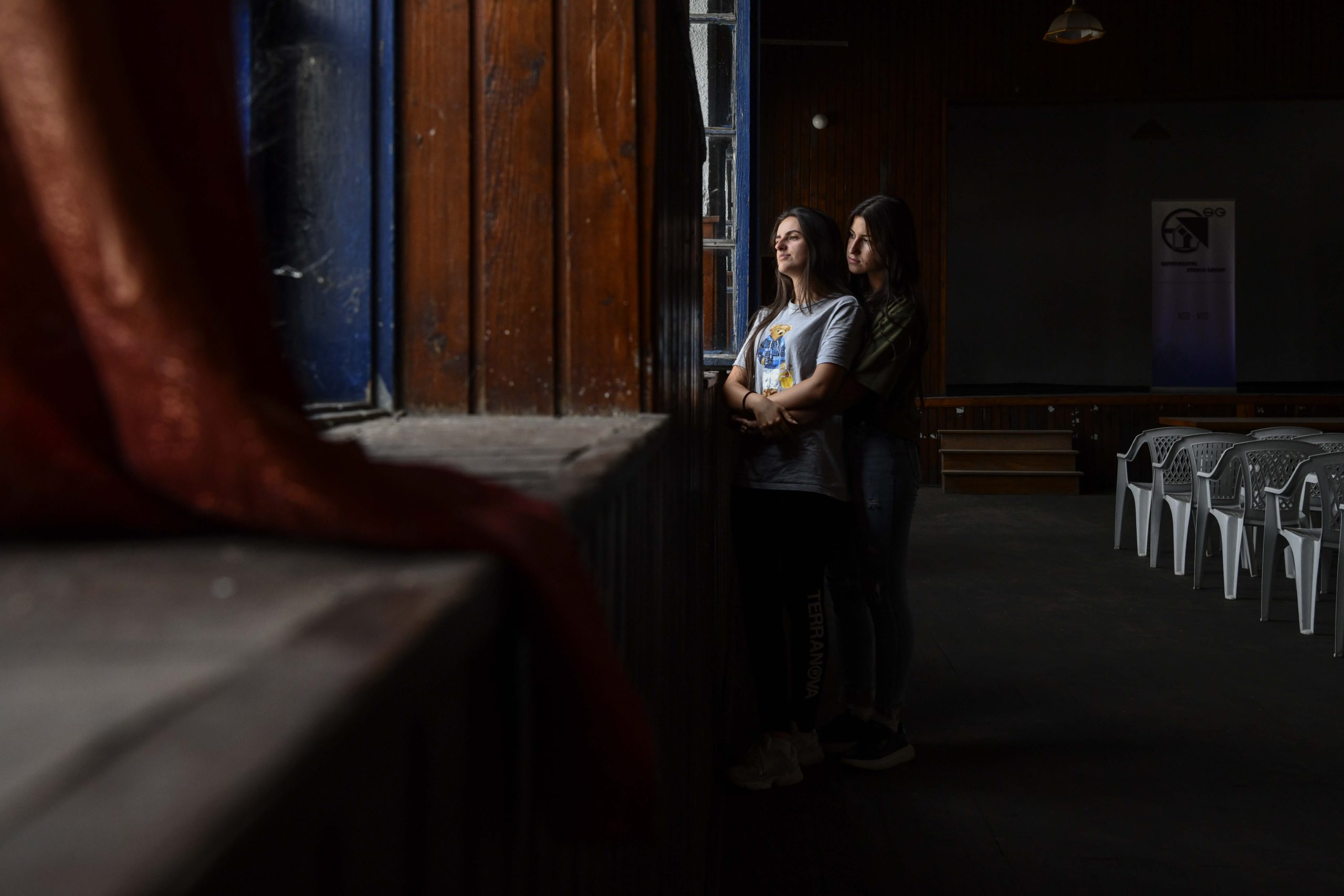
I ran into them every day — sometimes multiple times a day — in between classes while they waited for Paja to open his kafana or for Kujto to open Podrum so they could grab a coffee. Sometimes, when everything was closed, which was often the case, they would take out some pillows and sit on the concrete outside on the square. They daydreamed about university. Miljana wants to study tourism, while Ivona was eyeing IT or maybe even journalism. They have a secret plan to go to Belgrade together.
Once, enthralled by my new role as an enjoyer of the countryside, I was telling Ivona about the little house, and how much I enjoyed the view of cornfields and haystacks. “Good for you,” she said, “I can’t wait to not have to look at it anymore.”
The Bus Stop
The Yugoslav-era toadstool-shaped bus stop is where you can catch a minibus that runs to Peja eight times a day. The bus line connects a number of villages in the area, so the minibus is the only setting around where you can hear Serbian and Albanian spoken in the same place. It is usually packed and I was often forced to stand hunched over because the roof was low. If I was able to stand under the always-open roof hatch, I’d get a couple extra centimeters of headspace and free A/C directly to my forehead.
The bus stop is also where you wait for the bus to Belgrade.
“Only once I went there, I realized what life we are living here,” Ljilja told me. “For the first few days, I was literally afraid to cross the street there, but then I looked at other people and just did what they did,” she laughed.
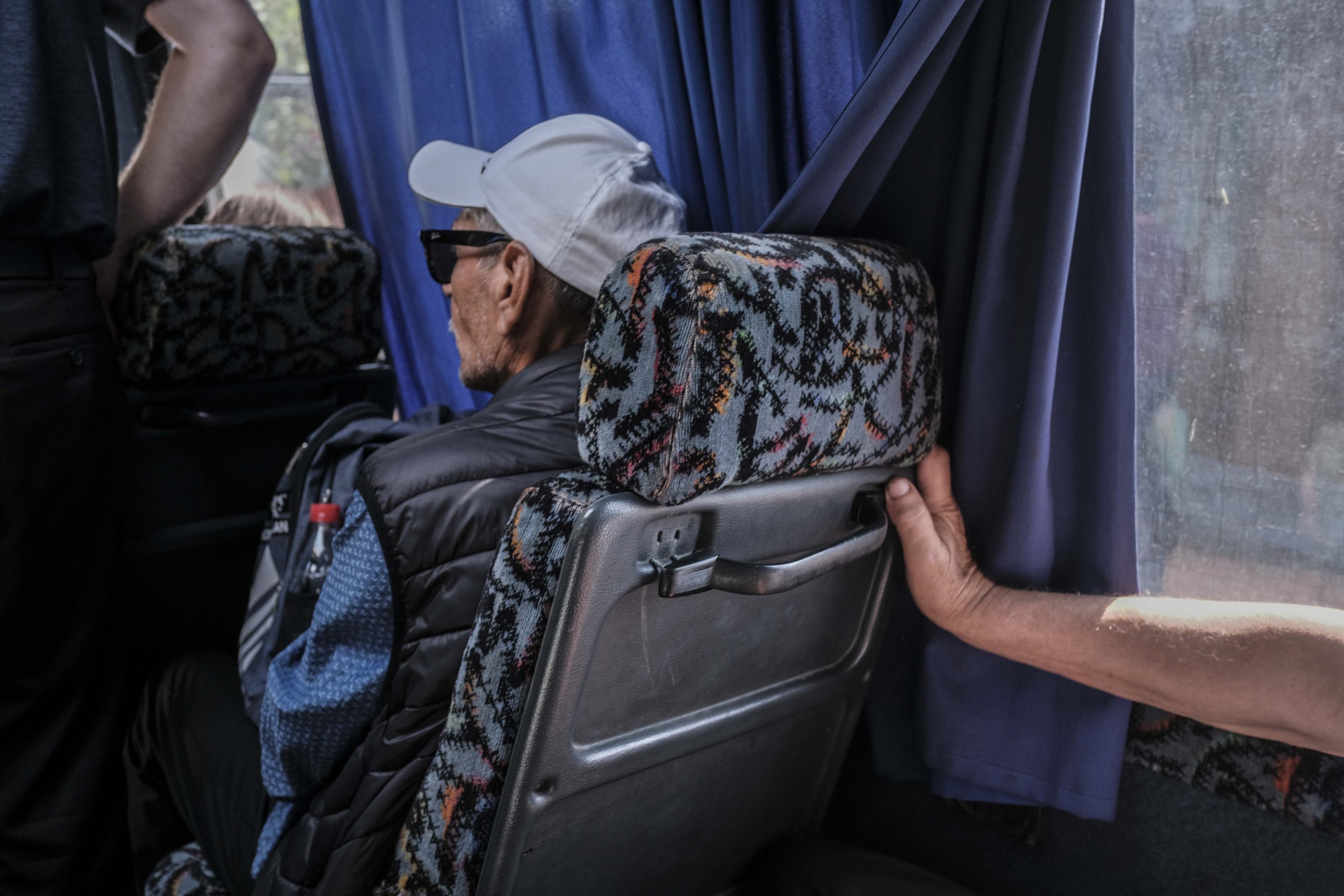
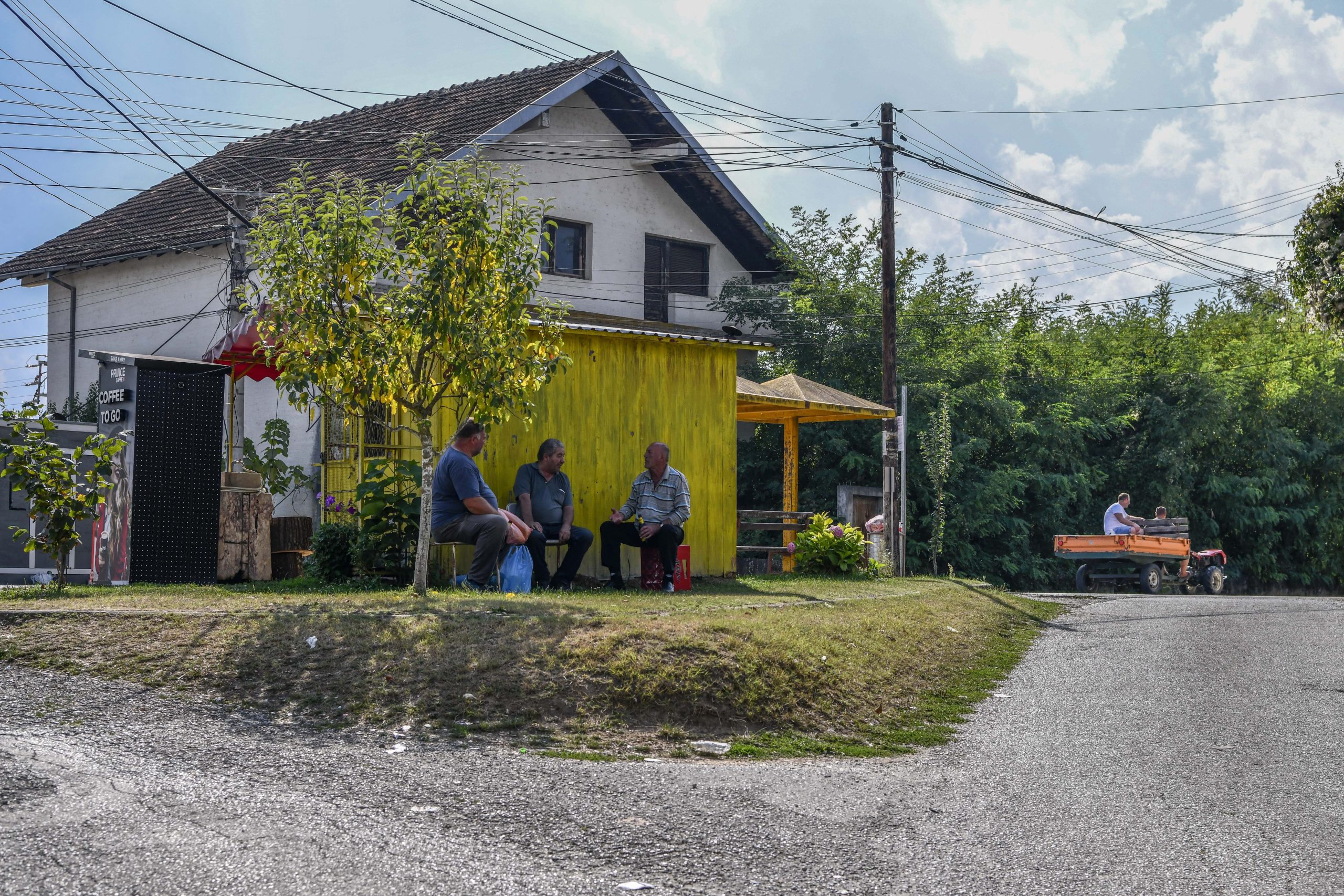
I remember the story of a local young man, an outstanding athlete. During high school he moved to Belgrade and started to train with a major sports club. A brilliant career seemed to be ahead of him, until someone from the club pressured him to pay up in order to advance to the first team. It was a lot of money — much more than he had. Disappointed, he returned to Kosovo and tried studying at a faculty in the north. But when the professor asked him for a bribe he dropped out. He moved again to Belgrade, where today he’s a worker in the ceramic tiling business. For a lot of young people in Goraždevac, that’s the best scenario they can hope for.
The bus to Belgrade used to run every day, but nowadays it’s only three times a week — Tuesdays, Thursdays and Sundays. It tends to return emptier than it departed.
Peja II
We finished having lunch in a small restaurant on the outskirts of the city. Darko had ordered for us in Albanian but everyone still pegged us as Serbs, and the owner, an older guy, served us in Serbian with a prijatno.
It’s always a bit funny to me when Darko orders for me in Albanian. I grew up in Belgrade, my parents in a mixed marriage, and I can barely utter the basics. Most Albanians I meet find it ridiculous that a person named Ilir Gashi, arguably the most Kosovar Albanian name in the world, doesn’t speak the language.
On our way out we pass the two cooks, a young guy and a girl. It’s the middle of a hot summer afternoon, the restaurant is empty and they’re waiting around for something to happen. Faleminderit shumë, ditën e mirë, I say, thank you very much and have a good day. I don’t know much, but I know that.
They look right through me, as if I’m not there, even though I’m right in front of them. In the background, the eternal buzzing sound of a refrigerator, and a fly buzzes away from the wall. They hold their cold silence and I walk out.
For a moment I thought I knew what it might feel like, being a Serb in Peja.
Podrum
When night falls in Goraždevac, younger people converge on a basement bar, which is conveniently called Podrum (“Basement”).
The space is very dark. There are a few tables and booths on one side. On the other is the bar. The music is loud, which sometimes makes it hard to hear what people are saying, even if they’re right up close to you.
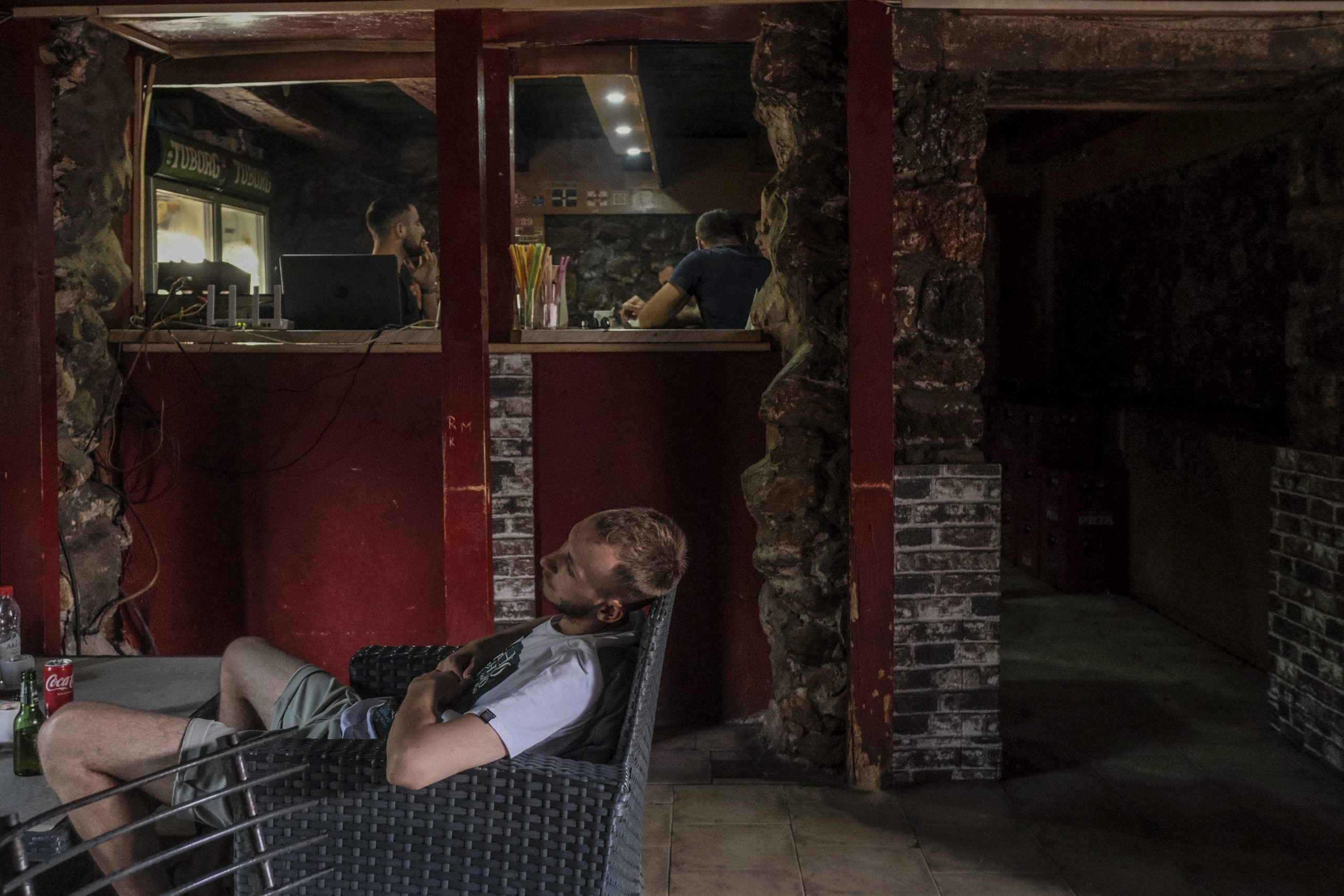
But I soon realized that often there is not much to talk about anyhow.
Everyone bumps into each other every day — at Paja’s, in front of Ljilja’s kiosk, at the bus station or outside the store. Only occasionally does a new face show up.
On that night we were celebrating Damjan’s birthday, but he wasn’t there with us. He was busy all day helping his uncle with a wedding party. People met up anyways, hoping he’d still make it.
But it turned out there were more reasons to celebrate. The owner brought me a small piece of cloth and I looked up at him in confusion. I noticed that his shirt was completely torn up. It’s an old custom for a man to have his relatives and friends rip up the clothes he’s wearing when he becomes a father. It was the evening before my deadline for this story, but I ordered another round, a toast to the health and long life of the baby.
The Bistrica River
“Watch out — there might be snakes,” Darko said. I looked about vigilantly while Darko ambled down the road. “Back when we were kids, we used to catch them,” he said, before adding, “not all the snakes around here are venomous.”
Eventually, we turn onto a dirt path through a meadow. The river was nowhere in sight. I was confused because I knew that the murders took place right on the river bank. “The Bistrica’s course has shifted, so now it’s all the way down there, behind those trees,” he said, pointing his finger. He believes the river’s shifting banks are connected to large-scale, mostly illegal, sand mining operations. It’s such a small river, and yet the water levels have dropped significantly since the digging started. No wonder the wells have dried up.
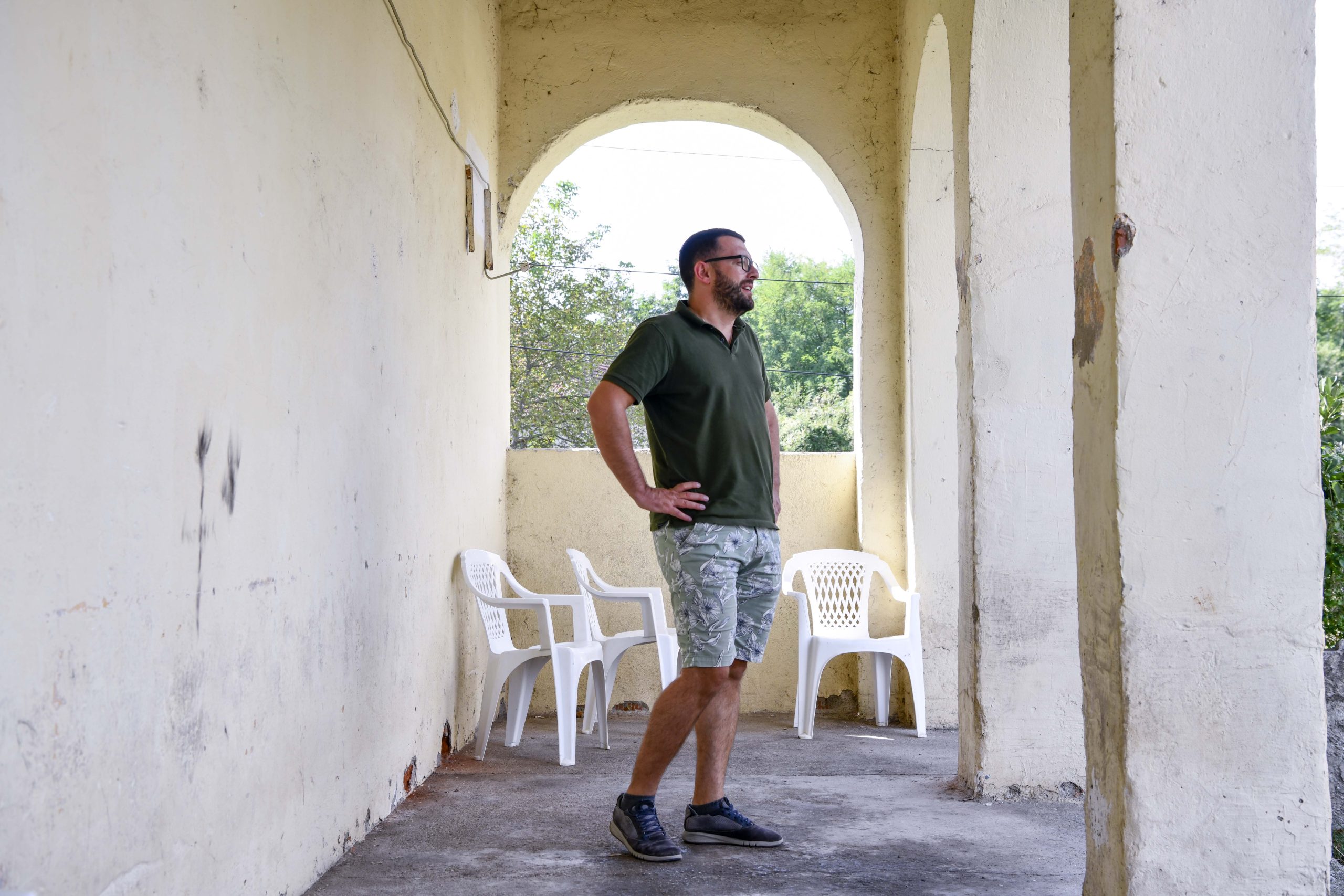
Darko is editor-in-chief of Radio Goraždevac, the only Serbian-language media outlet in this part of Kosovo.
We finally reach the site. It seems unmarked. “There was a rock somewhere here,” Darko said, “but the whole area is overgrown.”
He pointed at the spot where the kids were hanging out on that summer day, playing cards, sunbathing, swimming. Then he pointed across the river, in the direction the shots were fired from.
It was 2003 and Darko was 19. Now the editor-in-chief of Radio Goraždevac, Darko had to cover that story as his first reporting assignment. Ivan, one of the two boys who died, had been his deskmate at school. Panto, the other boy, was 13, a deskmate of Darko’s younger brother. “After I finished the news report, I was supposed to read it out over the phone. I started to read once, then twice, but my voice was failing me. I managed only on my third try.”
It remains a mystery to this day who did it and why. It’s a difficult matter to discuss, but some locals believe that it was a reprisal. Just across the river, less than two kilometers away, stands the village of Zahaq, where Serbian forces committed one of the local massacres in 1999.
In the immediate aftermath of the Bistrica shootings, the car that transported one of the injured boys was attacked and trashed by a group of young men near the market in central Peja. KFOR had to pull them out to safety. Once the wounded managed to reach the hospital, according to the survivors, they didn’t receive proper care. “Plaster casts were put over their open wounds,” Darko told me. There was a Croatian woman working for the U.N. who, Darko said, “sounded the alarm and made arrangements to transfer them to Belgrade.”
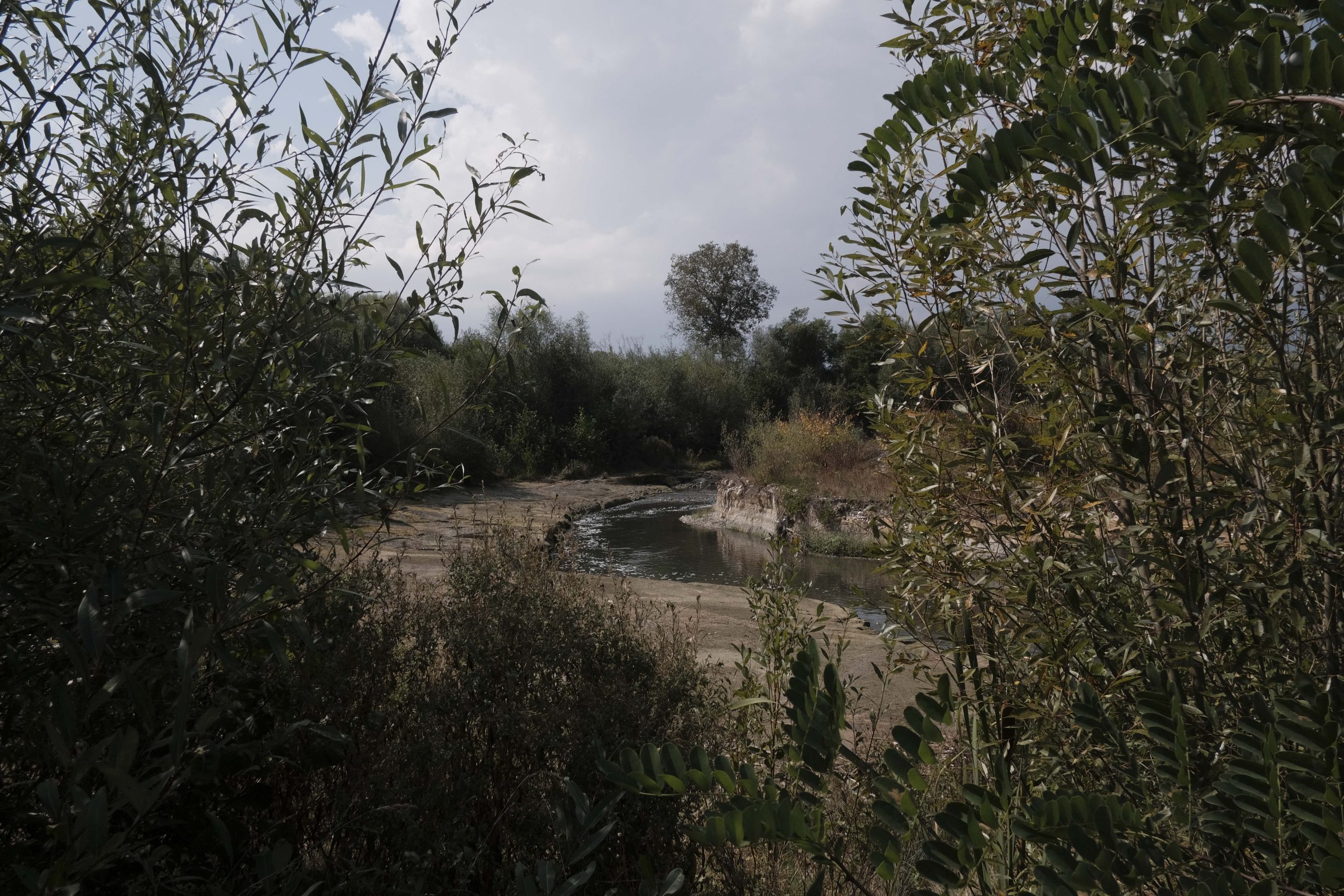
Many years later, Darko sought help at a hospital in Peja. His then 18-month-old daughter had a serious infection. “To be honest, I was scared and suspicious,” he said. “I had flashbacks from that day running through my head. The doctor seemed to have noticed. He told me: ‘Don’t worry. I’m going to take care of her like my own daughter.’
“He saved her.”
Darko stopped to pick a wild plum from the tree.
“We’ve stayed friends to this day.”
Then all of a sudden he cheerfully exclaimed, “See, there it is!”
A small snake raced across the dirt road, disappearing in the bushes. Behind them, the meadow rippled all golden yellow in the last streaks of late afternoon sunlight. It was soon to disappear, and Accursed Mountains were already painted in a darker color, their edges covered in haze.
The fall was coming, and no one knew what was coming with it.
Photos: Atdhe Mulla / K2.0.
The content this article is the sole responsibility of K2.0.
Curious about how our journalism is funded? Learn more here.
